

.css-1dmjnw1{position:relative;}.css-1dmjnw1:before{content:"";position:absolute;} .css-13il6b0{display:block;font-family:Ramillas,Ramillas-weightbold-roboto,Ramillas-weightbold-local,Georgia,Times,Serif;font-size:2rem;font-weight:800;line-height:1.2;margin-bottom:0;margin-top:0;-webkit-text-decoration:none;text-decoration:none;}@media (any-hover: hover){.css-13il6b0:hover{color:link-hover;}}@media(max-width: 48rem){.css-13il6b0{font-size:1.5rem;line-height:1.1;}} The Von Erich Family’s Tragic True Story Inspired ‘The Iron Claw’ .css-ha23m7{position:relative;}.css-ha23m7:after{content:"";position:absolute;}
The biopic about the famous wrestling dynasty is now streaming on Max.

.css-1ymvwpa{display:block;font-family:Ramillas,Ramillas-weightbold-roboto,Ramillas-weightbold-local,Georgia,Times,Serif;font-size:2rem;font-weight:bold;line-height:1.2;margin-bottom:0;margin-top:0;-webkit-text-decoration:none;text-decoration:none;}@media (any-hover: hover){.css-1ymvwpa:hover{color:link-hover;}}@media(max-width: 48rem){.css-1ymvwpa{font-size:1.5rem;line-height:1.1;}} Amy Winehouse’s Ex-Husband Blake Fielder-Civil Says ‘Back to Black’ Is “Almost Therapeutic”
Married to Winehouse for two years, Fielder-Civil has weighed in on the new biopic about the late singer.

.css-16fg1hg{-webkit-text-decoration:none;text-decoration:none;display:block;margin-top:0;margin-bottom:0;font-family:Gilroy,Gilroy-roboto,Gilroy-local,Helvetica,Arial,Sans-serif;font-size:1.125rem;line-height:1.2;font-weight:bold;color:#323232;text-transform:capitalize;}@media (any-hover: hover){.css-16fg1hg:hover{color:link-hover;}} Elvis Presley’s Life at Graceland

‘Baby Reindeer’: Richard Gadd's True Story
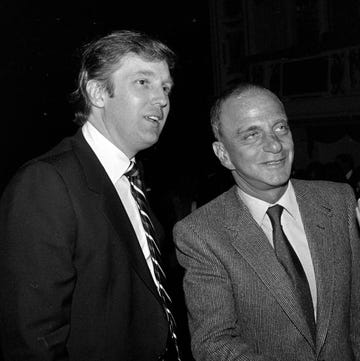
Donald Trump Had an Influential Mentor in Roy Cohn

Get to Know ‘Bridgerton’ Star Nicola Coughlan
Notable now.

Donald Trump
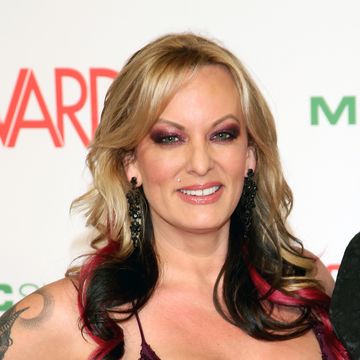
Stormy Daniels

Jesse Plemons
Notorious figures and acts.

15 Notorious Serial Killers and Their Chilling Crimes
From the mysterious “Jack the Ripper” to the enigmatic Ted Bundy, these figures continue to generate both horror and morbid curiosity.

.css-43q7z5{-webkit-text-decoration:none;text-decoration:none;display:block;margin-top:0;margin-bottom:0;font-family:Gilroy,Gilroy-roboto,Gilroy-local,Helvetica,Arial,Sans-serif;font-size:1.125rem;line-height:1.2;font-weight:bold;color:#ffffff;text-transform:capitalize;}@media (any-hover: hover){.css-43q7z5:hover{color:link-hover;}} The Real-Life Hannibal Lecter
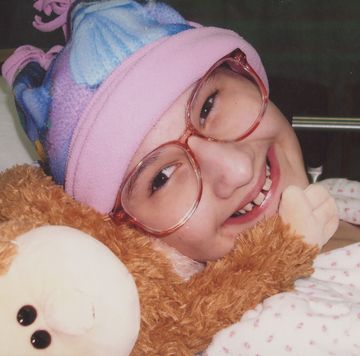
Where Is Gypsy Rose Blanchard Now?

A Timeline of the O.J. Simpson Murder Trial
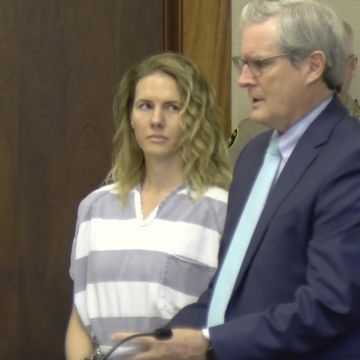
Ruby Franke: The “Momfluecer” Who Became a Felon
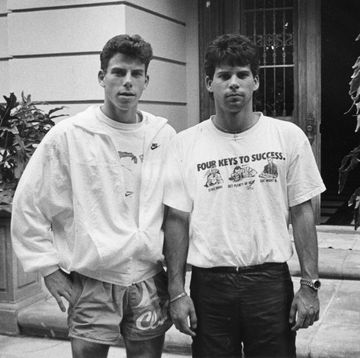
Where Are the Menendez Brothers Now?
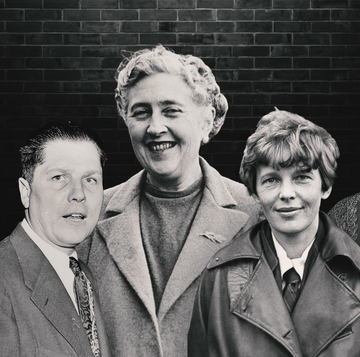
The 12 Greatest Unsolved Disappearances
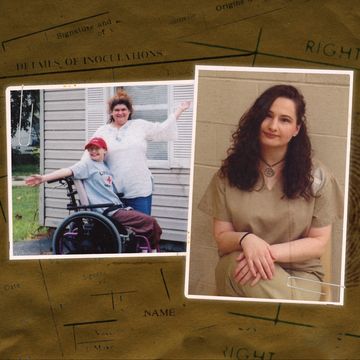
Gypsy Rose Blanchard: What Everyone Missed

10 Best True Crime Books

Why Huey P. Newton Fled—Then Returned—to the U.S.

The Origins of New Kids on the Block

Why Amy Winehouse and Her Ex-Husband Didn’t Last

The 10 Best AAPI Movies
People you should know.
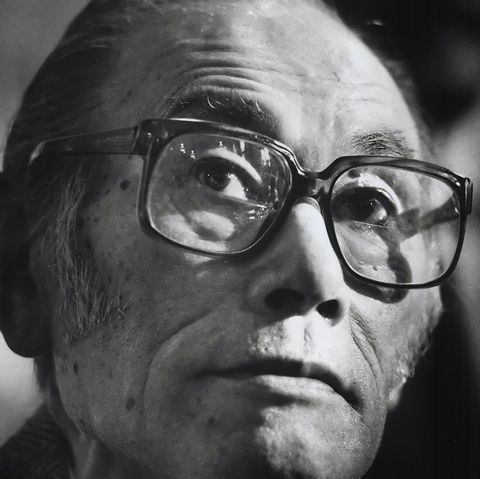
10 Influential Asian American and Pacific Islander Activists
With their leadership and bravery, these trailblazing activists left a lasting mark on American history, fighting for civil rights, labor rights, and more.

22 Famous Scientists You Should Know
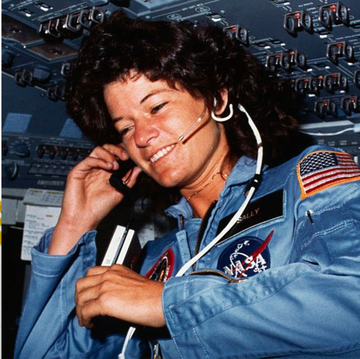
41 Inspiring Famous Women in History

10 Famous Poets Whose Enduring Works We Still Read
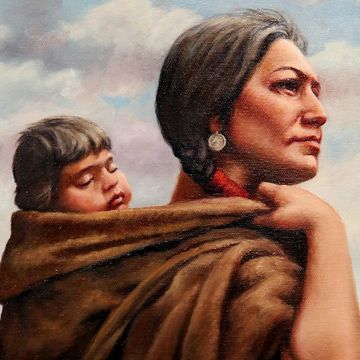
5 Powerful and Influential Native American Women
.css-1aq4sl:before,.css-1aq4sl:after{visibility:hidden;} connections.

Get to Know Rap Superstar Eminem’s 3 Children
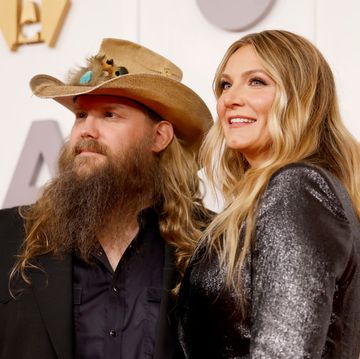
The Love Story of Morgane and Chris Stapleton
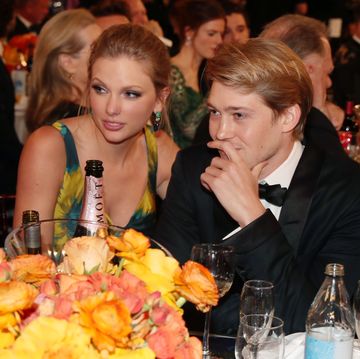
Taylor Swift and Joe Alwyn’s Private Relationship
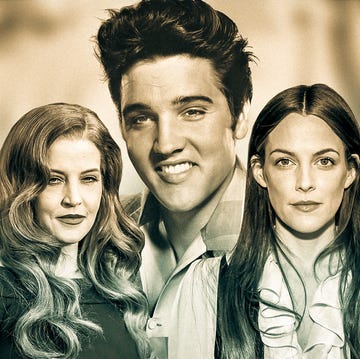
Elvis Presley’s Family Tree

All the Major Winners at the 2024 ACM Awards

How to Score Tickets to Pitbull's Tour

No Doubt Surprises Fans With Olivia Rodrigo

Carrie Underwood Is Expanding Her Music Empire

Best Student Discount Subscriptions
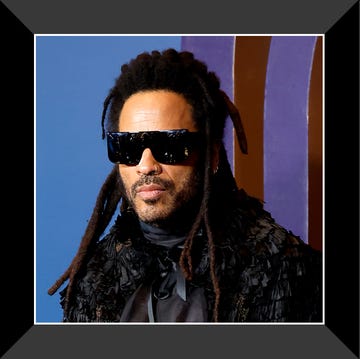
Shop Gwenyth Paltrow's Fav Grown Alchemist Now

Shop the $20 Lipstick Selena Gomez Wore at Cannes

10 Taylor Swift Books for Swifties

Marsha P. Johnson

Selena Gomez
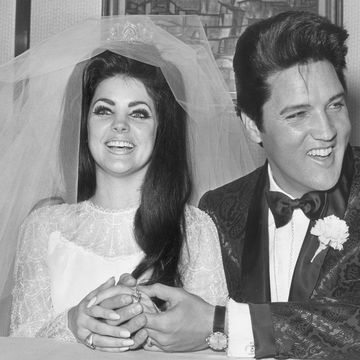
Why Priscilla Presley Never Remarried After Elvis

Johnny Cash
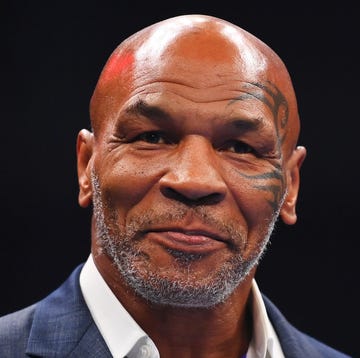
Priscilla Presley’s Net Worth Is Quite Complicated

Riley Keough’s Net Worth Quadrupled in Just a Year

- More from M-W
- To save this word, you'll need to log in. Log In
Definition of biography
Did you know.
So You've Been Asked to Submit a Biography
In a library, the word biography refers both to a kind of book and to a section where books of that kind are found. Each biography tells the story of a real person's life. A biography may be about someone who lived long ago, recently, or even someone who is still living, though in the last case it must necessarily be incomplete. The term autobiography refers to a biography written by the person it's about. Autobiographies are of course also necessarily incomplete.
Sometimes biographies are significantly shorter than a book—something anyone who's been asked to submit a biography for, say, a conference or a community newsletter will be glad to know. Often the word in these contexts is shortened to bio , a term that can be both a synonym of biography and a term for what is actually a biographical sketch: a brief description of a person's life. These kinds of biographies—bios—vary, but many times they are only a few sentences long. Looking at bios that have been used in the same context can be a useful guide in determining what to put in your own.
Examples of biography in a Sentence
These examples are programmatically compiled from various online sources to illustrate current usage of the word 'biography.' Any opinions expressed in the examples do not represent those of Merriam-Webster or its editors. Send us feedback about these examples.
Word History
Late Greek biographia , from Greek bi- + -graphia -graphy
1665, in the meaning defined at sense 2
Dictionary Entries Near biography
biographize
Cite this Entry
“Biography.” Merriam-Webster.com Dictionary , Merriam-Webster, https://www.merriam-webster.com/dictionary/biography. Accessed 2 Jun. 2024.
Kids Definition
Kids definition of biography, more from merriam-webster on biography.
Nglish: Translation of biography for Spanish Speakers
Britannica English: Translation of biography for Arabic Speakers
Britannica.com: Encyclopedia article about biography
Subscribe to America's largest dictionary and get thousands more definitions and advanced search—ad free!

Can you solve 4 words at once?
Word of the day.
See Definitions and Examples »
Get Word of the Day daily email!
Popular in Grammar & Usage
More commonly misspelled words, commonly misspelled words, how to use em dashes (—), en dashes (–) , and hyphens (-), absent letters that are heard anyway, how to use accents and diacritical marks, popular in wordplay, the words of the week - may 31, pilfer: how to play and win, 9 superb owl words, 10 words for lesser-known games and sports, your favorite band is in the dictionary, games & quizzes.

- Daily Crossword
- Word Puzzle
- Word Finder
- Word of the Day
- Synonym of the Day
- Word of the Year
- Language stories
- All featured
- Gender and sexuality
- All pop culture
- Writing hub
- Grammar essentials
- Commonly confused
- All writing tips
- Pop culture
- Writing tips
Advertisement
[ bahy- og -r uh -fee , bee- ]
the biography of Byron by Marchand.
- an account in biographical form of an organization, society, theater, animal, etc.
- such writings collectively.
- the writing of biography as an occupation or field of endeavor.
/ baɪˈɒɡrəfɪ; ˌbaɪəˈɡræfɪkəl /
- an account of a person's life by another
- such accounts collectively
- The story of someone's life. The Life of Samuel Johnson , by James Boswell , and Abraham Lincoln , by Carl Sandburg , are two noted biographies. The story of the writer's own life is an autobiography .
Discover More
Derived forms.
- biˈographer , noun
- biographical , adjective
- ˌbioˈgraphically , adverb
Word History and Origins
Origin of biography 1
Example Sentences
Barrett didn’t say anything on Tuesday to contradict our understanding of her ideological leanings based on her past rulings, past statements and biography.
Republicans, meanwhile, focused mostly on her biography — including her role as a working mother of seven and her Catholic faith — and her credentials, while offering few specifics about her record as a law professor and judge.
She delivered an inspiring biography at one point, reflecting on the sacrifice her mother made to emigrate to the United States.
As Walter Isaacson pointed out in his biography of Benjamin Franklin, Franklin proposed the postal system as a vital network to bond together the 13 disparate colonies.
Serving that end, the book is not an in-depth biography as much as a summary of Galileo’s life and science, plus a thorough recounting of the events leading up to his famous trial.
The Amazon biography for an author named Papa Faal mentions both Gambia and lists a military record that matches the FBI report.
For those unfamiliar with Michals, an annotated biography and useful essays are included.
Did you envision your Pryor biography as extending your previous investigation—aesthetically and historically?
But Stephen Kotkin's new biography reveals a learned despot who acted cunningly to take advantage of the times.
Watching novelists insult one another is one of the primary pleasures of his biography.
He also published two volumes of American Biography, a work which his death abridged.
Mme. de Chaulieu gave her husband the three children designated in the duc's biography.
The biography of great men always has been, and always will be read with interest and profit.
I like biography far better than fiction myself: fiction is too free.
The Bookman: "A more entertaining narrative whether in biography or fiction has not appeared in recent years."
Related Words
- autobiography
27 of the Best Professional Bio Examples I've Ever Seen [+ Templates]
Published: December 20, 2023
As a writer, I have to let readers and potential clients know my expertise, my skills, and why they should work with me or be interested in what I say. So, a professional bio is a must in my industry.

Though I'm definitely familiar with professional bios, I can admit they can be challenging. What do I include? What do readers need to know?
As daunting as writing a professional bio can be, professional bios are crucial when applying for jobs, seeking new clients, or networking. A professional bio also gives the world a brief snapshot of you and your professional ideals.
If you‘re at a loss for how to write a professional bio that packs a punch, I’ve got you covered. In this journey, tools like HubSpot’s user-friendly drag-and-drop website builder can be instrumental in showcasing your professional bio online with ease and style.
I will walk you through how to write a professional bio that you can proudly publish, provide professional bio templates, and show you the best professional bio examples you can get inspiration from.
![bio biography or → Download Now: 80 Professional Bio Examples [Free Templates]](https://no-cache.hubspot.com/cta/default/53/4eb63650-d315-42e5-9ac7-8d0fcba29324.png)
What is a professional bio?
Professional bio templates, how to write a professional bio, best professional bio examples, how to write a short bio.
.webp)
80+ Professional Bio Templates & Examples
Create a compelling professional narrative for a proper, attention-grabbing introduction.
- LinkedIn Summaries
- Speaker Intros
- Website Bios
- Professional Profile
You're all set!
Click this link to access this resource at any time.
Tell us a little about yourself below to gain access today:
A professional bio or biography is a short overview of your experience. Professional bios usually include details about education, employment, achievements, and relevant skills.
Purpose of Professional Bios
A bio tells an audience about who you are, what you've done, and what you can do. It can help potential employers, fans, or customers understand your personality and what you stand for.
Writing a bio without a clear starting point is challenging — believe me, I've tried. To ease the process, here are some templates I put together to get you started.
I‘ve found it’s best to keep your professional bio honest and to the point. Too long of a bio, and you risk losing your audience's attention. After all, audiences will only read a web page for less than a minute before clicking elsewhere.
And honesty is key because most consumers and clients won‘t invest in someone or something if it doesn’t seem trustworthy. In fact, 67% of consumers say they must trust a brand before investing in its products or services.
"Plus," she adds, "I'm always happy to talk about my cats at any given moment. You never know when a fellow cat mom could be reading."
Values and Work Approach
Your values can sometimes show your work ethic more effectively than your career path. It can also help you endear yourself to employers and colleagues who want to work with people with similar values.
So don‘t be shy: Share how you incorporate your values into your work. Whether it’s a commitment to innovation, customer satisfaction, or ethical decision-making, explain what drives you and be enthusiastic about it.
Your Personality
Remember: Your bio should always include a taste of your personality! Your sense of humor, creativity, or collaborative nature could all give readers a sense of who you are. This helps readers connect with you on a more personal level.
Remember to tailor your bio for different platforms and audiences. Also, keep it concise and impactful while highlighting the most relevant information in each context.
First-Person Bio vs. Third-Person Bio
While first-person bios are common, third-person bios can be more effective in formal situations.
Your decision to write your professional bio in the first or third person depends on your desire to leave a more personable or assertive impression.
Both approaches work, provided you tailor them to your goals and audience. What’s important is to be clear and tell your story in a way that connects with your reader.
How to Write a First-Person Bio
Writing in the first person can be a great way to connect with your audience when building a personal brand. When you write a first-person bio, use "I" or "me" to make yourself relatable and approachable.
Here's one way I’d write a first-person bio:
"I'm a freelance writer specializing in small business content. I've worked with companies in a variety of industries like home care to fine leather goods."
Speaking in the first person here connects you with a client or brand based on your experience and opinions. Put another way, writing a first-person bio is like telling your story to your audience.
Here are a few tips to make your first-person bio great:
Don’t start every sentence with "I."
Showing instead of telling is a great approach.
Let’s say you’re a writer who wants to create a short professional bio. Instead of saying, "I love to write," you can say, "Writer. Bad but enthusiastic dancer."
This portrays your writing skill, shows your personality outside of writing as a dancer, and includes a little sense of humor, which is essential for a writer.
Remember, you know yourself better than anyone.
Adding a back story to your bio helps create context for the roles and successes you write about. Think of it like a case study about who you were, what you are now, and the process that got you to your current position.
Focus on valuable details.
Quick facts about you can showcase your identity and values. For example, if you're writing a bio for LinkedIn, think about how to tie your hobby into what you do.
Let's say Animal Crossing is your hobby. Does it align with your career aspirations? It can be a great addition to your bio if you want to pursue a video game career.
However, if your interests lie elsewhere, including a more relevant hobby is better.
How to Write a Third-Person Bio
Third-person bios sound more authoritative and objective. So, if you’re job searching in a formal industry, applying for grants, or trying to get published, you may want to stick to the third person.
For instance, when you write a third-person bio, you may start with:
"Jasmine Montgomery is a Senior Hiring Manager at L’Oreal based in New York. She recruits across several business units to connect with the brightest talent from around the globe."
By only using your name and pronouns to speak about yourself here, you are letting your title and skill set speak for themselves.
These bios create distance between the subject of the bio (you) and the reader through a third person. This person could be anyone, but they usually speak in a tone emphasizing their expertise.
This makes third-person bios feel aloof or overly formal sometimes.
Ideally, your third-person bio should sound friendly but polished, like a message from a close colleague at work. Here are a few tips on how to write a great third-person bio.
Write from the perspective of someone you know and trust.
It can be challenging to write about yourself, so try to see yourself from the perspective of your favorite person at work or a mentor you trust. This can help you write from a position of authority without feeling self-conscious.
Show the reader why they should trust your opinion.
A professional bio often reflects a specific industry or niche. With this in mind, your text should include relevant details that professionals in your industry know. Avoid jargon whenever you can.
Remember, you're telling a story.
If you want a third-person bio, but you're used to writing in first-person, it may help to write it the most comfortable way for you.
Your professional bio is an essential piece of writing, so edit it carefully. Edit your writing from both points of view and see which works best for your target audience.
Here's how to write a professional bio, step by step.
- Create an 'About' page for your website or profile.
- Begin writing your bio with your first and last name.
- Mention any associated brand name you might use.
- State your current position and what you do.
- Include at least one professional accomplishment.
- Describe your values and how they inform your career.
- Briefly tell your readers who you are outside of work.
- Use humor or a personal story to add flavor to your professional bio.
If you’re anything like me, you probably don't think about your professional bio until you’re asked to "send one over via email."
You have one afternoon to come up with it, so you scramble together a bio that ends up reading like this:
"Rodney Erickson is a content marketing professional at HubSpot, a CRM platform that helps companies attract visitors, convert leads, and close customers.
Previously, Rodney worked as a marketing manager for a tech software startup. He graduated with honors from Columbia University with a dual degree in Business Administration and Creative Writing."
To be fair, in certain contexts, your professional bio needs to be more formal, like Mr. Erickson's up there. But there are also cases where writing a personable and conversational bio is good.
Whether you choose the formal or casual route, use the following steps to create a perfect bio.
1. Create an 'About' page for your website or profile.
You need an online space to keep your professional bio. Here are a few to consider (some of these you might already have in place):
- Facebook Business page .
- Industry blog byline .
- Instagram account .
- Personal website .
- LinkedIn profile .
- Industry website .
- Personal blog .
As you'll see in the professional bio examples below, the length and tone of your bio will differ depending on the platforms you use.
Instagram, for example, allows only 150 characters of bio space, whereas you can write as much as you want on your website or Facebook Business page.
2. Begin writing your bio with your first and last name.
If your readers remember nothing else about your bio, they should remember your name. Therefore, it's a good idea for your first and last name to be the first two words of your professional bio.
Even if your name is printed above this bio (hint: it should), this is a rare moment where it's okay to be redundant.
For example, if I were writing my bio, I might start it like this:
Lindsay Kolowich
Lindsay Kolowich is a Senior Marketing Manager at HubSpot.
3. Mention any associated brand name you might use.
Will your professional bio represent you or a business you work for? Ensure you mention the brand you associate with in your bio. If you're a freelancer, you may have a personal business name or pseudonym you advertise to your clients.
Here are a few examples:
- Lindsay Kolowich Marketing.
- SEO Lindsay.
- Kolowich Consulting.
- Content by Kolowich (what do you think ... too cheesy?).
Maybe you founded your own company and want its name to be separate from your real name. Keep it simple like this: "Lindsay Kolowich is the founder and CEO of Kolowich Consulting."
4. State your current position and what you do.
Whether you're the author of a novel or a mid-level specialist, use the following few lines of your bio to describe what you do in that position. Refrain from assuming your audience knows what your job title entails.
Make your primary responsibilities known so readers can know you and understand what you offer to your industry.
5. Include at least one professional accomplishment.
Just as a business touts its client successes through case studies, your professional bio should let your audience know what you've achieved.
What have you done for yourself — as well as for others — that makes you a valuable player in your industry?
6. Describe your values and how they inform your career.
Why do you do what you do? What might make your contribution to the market different from your colleagues? What are the values that make your business a worthwhile investment to others?
Create a professional bio that answers these questions.
7. Briefly tell your readers who you are outside of work.
Transition from describing your values in work to defining who you are outside of work. This may include:
- Your family.
- Your hometown.
- Sports you play.
- Hobbies and interests.
- Favorite music and travel destinations.
- Side hustles you're working on.
People like connecting with other people. The more transparent you are about who you are personally, the more likable you'll be to people reading about you.
8. Use humor or a personal story to add flavor to your professional bio.
End your professional bio on a good or, more specifically, a funny note. By leaving your audience with something quirky or unique, you can ensure they'll leave your website with a pleasant impression of you.
Following the steps above when writing your bio is important, but take your time with one section. People consume lots of information daily. So ensure your bio hooks 'em in the first line, and you won’t lose them.
(P.S. Want to boost your professional brand? Take one of HubSpot Academy's free certification courses . In just one weekend, you can add a line to your resume and bio that over 60,000 marketers covet.)
Why Good Bios Are Important for a Professional
You may think, "How many people read professional bios, anyway?"
The answer: A lot. Though there's no way to tell who is reading it, you want it catchy. Your professional bio will delight the right people coming across it on multiple platforms.
Professional bios can live on your LinkedIn profile , company website, guest posts, speaker profiles, Twitter bio , Instagram bio , and many other places.
And most importantly, it‘s the tool you can leverage most when you’re networking.
Bottom line? People will read your professional bio. Whether they remember it or it makes them care about you is a matter of how well you present yourself to your intended audience.
So, what does a top-notch professional bio look like? Let‘s review a few sample bios for professionals like you and me. Then, we’ll cover bio examples from some of the best people in the industry.
Short Sample Bios
Your bio doesn't have to be complicated. Here are five samples to glean inspiration from.
Example 1: Friendly Sample Bio
"Hey! My name is Ryan, and I'm a marketing specialist passionate about digital advertising. I have five years of experience managing various online campaigns and improving brand visibility for clients across multiple verticals. I love analyzing consumer behavior and leveraging data-driven strategies to maximize ROI. Outside work, I enjoy traveling, taking funny photos, and exploring new hiking trails."
Example 2: Mid-Career Sample Bio
"Jennifer Patel is a versatile graphic designer known for her creative approach and attention to detail. With a background in visual arts and eight years of experience, Jennifer has worked on diverse projects ranging from logo designs to website layouts. Her ability to understand and translate client needs into visually striking designs sets her apart. Jennifer finds inspiration in nature, music, and pop culture."
Example 3: Sales Sample Bio
"I'm a seasoned sales executive with a track record of exceeding targets and building strong client relationships. With a background in B2B sales, I've built a natural ability to understand customer needs and consistently exceed quota every month. I pride myself in my communication skills and strategic approaches, which have helped me thrive in highly competitive markets such as SaaS sales. Outside work, I enjoy playing basketball and volunteering at local charities."
Example 4: HR Sample Bio
"I am a dedicated human resources professional with a passion for fostering a positive workplace culture and facilitating employee development. With eight years of experience in talent acquisition and HR operations, I've played a key role in building high-performing teams. I'm known for my strong interpersonal skills and ability to create inclusive and supportive work environments. In my free time, I enjoy practicing yoga and exploring new culinary experiences."
Example 5: Software Engineer Sample Bio
"David Chang is a senior software engineer specializing in backend development. With a strong background in computer science and six years of experience, David has successfully built scalable and efficient solutions for complex technical challenges. He is well-versed in various programming languages and frameworks like C++, Java, and Ruby on Rails. In his spare time, David enjoys reading science fiction novels and playing the guitar."
Below, we've curated some of the best professional bio examples we've ever seen on Twitter, Instagram, Facebook, LinkedIn, and the various places you might describe yourself.
Check 'em out and use them as inspiration when crafting your own.
- Chimamanda Ngozi Adichie: Author
- Chima Mmeje: SEO Content Writer
- DJ Nexus: DJ
- Lena Axelsson: Marriage & Family Therapist
- Mark Levy: Branding Firm Founder
- Audra Simpson: Political Anthropologist
- Marie Mikhail: Professional Recruiter
- Wonbo Woo: Executive Producer
- Chris Burkard: Freelance Photographer
- Lisa Quine: Creative Consultant
- Nancy Twine: Hair Care Founder
- Trinity Mouzon: Wellness Brand Founder
- Alberto Perez: Co-Founder of Zumba Fitness
- Ann Handley: Writer and Marketer
1. Chimamanda Ngozi Adichie : Author
Bio platform: personal website.
Chimamanda Ngozi Adichie begins her professional bio with an invitation to her roots.
In a few paragraphs, she describes when and where she was born, her family, her education, her honorary degrees, and the depth of her work, which has been translated into 30 languages and several publications.
She can keep readers engaged by leading with a powerful hook that aligns with her target audience’s marketing needs.
- There’s clarity about who Chima serves.
- The hook is bold, catchy, and compels anyone to read further.
- Including client results makes clients visualize what they can expect.
3. DJ Nexus : DJ
Bio platform: facebook.
This New England-based DJ has single-handedly captured the Likes of over 2,000 people in and beyond Boston, MA. And even if you don‘t listen to the type of music he produces, it’s hard not to read his compelling Facebook bio.
For instance, consider his tagline, under "About" — " Quiet during the day. QUITE LOUD at night! " DJ Nexus tells you when he works awesomely. I got goosebumps just imagining a dance club where he might play music.
The second is the "long version," which is even more interesting than the first. Why? It reads like a story — a compelling one, at that. In fact, it gets hilarious in some parts.
The second sentence of the bio reads: "He was frightened of public school, loved playing baseball and football, ran home to watch ape films on the 4:30 Movie, listened to The Jam and The Buzzcocks, and read magic trick books."
Here's another excerpt from the middle:
It's a well-put value proposition that sets her apart from the rest of the HR industry.
Marie concludes her bio with a smooth mix of professional skills, like her Spanish fluency, and personal interests, such as podcasting and Star Wars (she mentions the latter with just the right amount of humor).
- Straight off the bat, Marie uses a story to share her experiences of how she began as a recruiter.
- It provides a subtle pitch for readers to check out her podcast.
- The bio exudes Maries approachable, fun, and playful personality.
8. Wonbo Woo : Executive Producer
Wonbo Woo is the executive producer of WIRED's video content and has several impressive credits to his name. What does this mean for his professional bio? He has to prioritize.
With this in mind, Wonbo opens his bio with the most eye-catching details first (if the image below is hard to read, click it to see the full copy ).
I wouldn‘t necessarily be inclined to follow Chris if his bio had simply read, "I post beautiful images." But images that inspire me to travel? Now that’s something I can get behind.
Last, he ends on a humble, sweet note: "He is happiest with his wife Breanne raising their two sons." So inject personal information into your bio — it makes you seem approachable.
- It highlights Chris’s achievement without bragging.
- The last sentence portrays Chris as a responsible man who loves his family.
- The well-written bio speaks to nature lovers who like the outdoors, surfing, and more. This gives them reasons to follow Chris.
10. Lisa Quine : Creative Consultant
Bio platform: portfolio website.
Creative professionals who specialize in visual art may find it challenging to balance the writing of their bio and displaying of their portfolio. Not Lisa Quine. Lisa has an exceptional balance of her professional bio and creative work.
Throughout her bio, you'll notice the number of murals she's completed and a brief timeline of her career. This helps her paint the picture of who she is as a professional.
The rest of her bio similarly focuses on Twine's strengths as someone who’s able to take hair care "back to basics."
Mouzon effectively grips the reader's attention with this introduction and then dives into some of her impressive accomplishments — including a brand now sold at Urban Outfitters and Target.
The language used throughout Mouzon's bio is authentic, real, and honest.
For instance, in the second paragraph, she admits:
"While building a brand may have looked effortless from the outside, starting a business at age 23 with no resources or funding quickly forced me to realize that early-stage entrepreneurship was anything but transparent."
As an avid Zumba fan, I was excited to include this one. Perez styles his LinkedIn bio as a short story, starting with his background as a hard-working teen who held three jobs by age 14.
His bio tells the fun and fascinating origin story of Zumba, in which Perez, an aerobics teacher in Florida at the time, forgot his music for class and used a Latin music cassette tape instead ... "And it was an instant hit!"
His bio continues:
"Shortly after he was connected to Alberto Periman and Alberto Aghion, and Zumba was officially created ... What started as a dream now has 15 million people in more than 200,000 locations in 186 countries who take Zumba classes every week."
There's something in there for everyone.
- The last section of the bio shows Ann’s warm personality — "Ann lives in Boston, where she is Mom to creatures two- and four-legged."
- Written in the third person, this bio has lots of proof (like followers), which shows Ann is a terrific marketing leader.
If you're posting a bio on a social media account or sending a quick blurb to a client, you want to keep it short and sweet while showcasing your accomplishments.
To get started, use these best practices for writing your short professional bio:
- Introduce yourself.
- State what you do.
- Add key skills or areas of expertise.
- Include a personal mission statement
- Celebrate your wins.
- Provide your contact information.
- Show them your personality.
1. Introduce yourself.
Your introduction is your first impression, so always begin by telling people who you are. You may start with a greeting like, "Hello, my name is" or "Hi! Let me first introduce myself …" when sending your bio as a message.
If you’re writing a bio for an online platform, stating your name at the beginning works as well.
Leading with your name — even as a question — is important for recognition and building relationships.
2. State what you do.
Give people an idea of what you do daily and where you work. Your job title is how the people put you into context and consider whether your profession relates to their industry.
So detail your most relevant work in your short bios, like CEO, professor, and author.
Take a cue from Angela Duckworth , who specifies what she does in her LinkedIn bio:
3. Add key skills or areas of expertise.
If you send a bio to a client or potential employer, highlight your most valuable skills. For instance, if your expertise is in social media marketing and content creation, like Ivanka Dekoning , list these skills.
- A joke. "Some mistakes are too much fun to only make once. At least that’s what I learned when I created…"
- Mention a hobby. "I’ll be honest: for me, tennis is life — Go Nadal!"
- A fun fact. "Every year, I watch 100 new films! I’m a cinephile and love every movie genre."
- A few emojis related to your interests. "🎶🤖🎾🎬🎭"
Whichever way you choose to get personal, give people a glimpse into who you are as an individual.
When writing a short bio, it can be tempting to pack in as much relevant information about yourself as possible — but this isn’t the most effective approach.
Instead, focus on including the details that you and your audience care about most and leave out the fluff.
Let's dive into a few examples of short professional bios.
Short Professional Bio Examples
- Tristen Taylor: Marketing Manager
- Lianna Patch: Copywriter
- Precious Oboidhe: Content Strategist and Writer
- Rebecca Bollwitt: Writer
- Megan Gilmore: Cookbook Author
- Bea Dixon: Feminine Care Founder
- Tammy Hembrow: Instagram Influencer
- Dr. Cody: Chiropractor
- Larry Kim: Founder
- Dharmesh Shah: Founder and CTO
- Lily Ugbaja: Content Strategist
- Ian Anderson Gray: Marketer
- Van Jones: Political Commentator, Author, and Lawyer
1. Tristen Taylor: Marketing Manager
Bio platform: blog byline.
Tristen Taylor is a Marketing Manager here at HubSpot. She's written content for HubSpot's Marketing, Sales, and Customer Service blogs; her blog author bio is one of my favorites.
What I love most about Tristen's bio is that it’s a great example of how to deliver information about yourself that is relevant to your work while also sharing fun details that audiences will find relatable.
Her bio reads:
"Building from her experience with GoCo.io and Southwest Airlines, Tristen's work has been recognized by Marketing Brew and BLACK@INBOUND. She lives in Washington, DC, attending anime conventions and painting in her free time."
Gilmore further includes a CTA link within her Instagram bio that leads followers to free, ready-to-use recipes. You might think, " Why would she do that since it discourages people from buying her book?"
But that couldn't be further from the truth.
By giving her followers the chance to try out her recipes, she's slowly turning leads into customers. After I tried a few of her Instagram recipes and loved them, I bought her book, knowing I'd like more of what she offered.
- The bio is short and direct.
- The CTA link includes an invitation for people to join her newsletter. Meaning, she can build her email list.
6. Bea Dixon : Feminine Care Founder
Bea Dixon, Founder and CEO of The Honey Pot Company, efficiently uses the space on her Instagram profile to highlight who she is as a well-rounded human — not just a businesswoman.
For instance, while she highlights her girl boss attitude with a tiara emoji, she equally calls attention to her fashion interests (Free People), her pets, Boss and Sadie, and her love for ramen noodles.

12. Ian Anderson Gray : Marketer
Details matter, especially when there’s a cap on the number of words you can use to express yourself.
For instance, the funny and impactful bio of Ian Anderson on his Twitter page reads:
"Dad & Husband. Confident Live® Marketing Podcast 🎧 & Show 🎥 Helping you level up your impact, authority & profits through the power of Confident Live Video."
What more do you need to know?
Ian doesn't take his bio too seriously but uses every character to highlight everything about him.
He includes his skills as a marketer and podcast host, who he is outside work as a dad, and what he can help you do. His smiles also give the bio a sense of humor and realness.
Don't forget to share this post!
Related articles.

The 17 Best Free Resume Builders We've Ever Discovered

40 Free Resume Templates for Microsoft Word (& How to Make Your Own)

Portfolios vs. Resumes — The Complete Guide

40 Interests That Deserve a Place on Your Resume

Making the Most of Electronic Resumes (Pro Tips and Tricks)

How to Write a Simple, Effective Resume (+20 Examples)

How to Write the Perfect Project Manager Resume

How to Write the Perfect Resume for Internships

Maximize Your Impact: 205 Action Verbs to Use on Your Resume

How Far Back Should a Resume Go? Everything You Need to Know
Create a compelling professional narrative for your summary, bio, or introduction.
Marketing software that helps you drive revenue, save time and resources, and measure and optimize your investments — all on one easy-to-use platform
What Is a Biography? Definition & 25+ Examples
Have you ever wondered what lies beneath the surface of history’s most influential figures?
Imagine a chance to delve into the intricate tapestry of their lives, unraveling the threads that have woven together the very essence of their character, and unearthing the pivotal moments that shaped their destinies.
Welcome to the enthralling world of biographies, where you are invited to embark on a captivating journey into the lives of the extraordinary. Prepare to be captivated by the compelling tales of human resilience, ingenuity, and ambition that lie at the heart of each biography.
Table of Contents
Defining Biography
A biography is a detailed account of a person’s life, written by someone other than the subject. The term “biography” is derived from two Greek words: “bio,” which means life, and “graphy,” which signifies writing. Thus, a biography is the written history of someone’s life, offering an in-depth look at their experiences, achievements, and challenges.
Biographies typically focus on the life of notable individuals, such as historical figures or celebrities, and provide a comprehensive view of their personal and professional journey.
Biographers, the authors of these works, aim to offer an accurate, well-researched portrayal of their subjects by studying various sources and conducting interviews if possible. This thorough research and attention to detail ensure that the resulting narrative is both informative and engaging.
Biographies are a subgenre of non-fiction literature, as they chronicle the lives of real people. However, not all life stories fall under the category of biography.
Autobiographies and memoirs, for instance, focus on the author’s own experiences and are written from a first-person perspective. While autobiographies aim to present an overarching narrative of the author’s life, memoirs tend to focus on specific incidents or periods.
When crafting a biography, it is essential for the biographer to maintain a neutral tone, avoiding any judgment or personal bias. This objectivity allows readers to form their opinions based on the presented facts, gaining a broader understanding of the subject.
Elements of a Biography
A well-crafted biography contains several key elements that provide a comprehensive picture of the subject’s life. These elements help readers gain a deeper understanding of the subject while fostering an emotional connection. Below are some essential aspects of a biography:
Personal and Family Background
The personal and family background section of a biography provides an essential foundation for understanding the subject’s journey and the factors that shaped their life. By exploring the subject’s early years, readers gain insight into the environment and experiences that influenced their character, values, and aspirations.
This section typically begins with an overview of the subject’s birthplace, family origins, and cultural heritage. It delves into the family dynamics, including descriptions of the subject’s parents, siblings, and extended family, shedding light on the relationships that played a crucial role in their development.
The personal and family background section also addresses significant life events, challenges, and milestones that occurred during the subject’s upbringing. These formative experiences may include pivotal moments, such as moving to a new city, attending a particular school, or encountering a mentor who had a lasting impact on their life.
Education and Career
The education and career section of a biography is crucial for understanding the intellectual and professional development of the subject. By tracing the subject’s academic journey and career progression, readers gain a clearer picture of the knowledge, skills, and experiences that shaped their path and contributed to their success.
This section begins by outlining the subject’s educational background, including the schools they attended, the degrees or qualifications they obtained, and any specialized training they received. It also highlights the subject’s academic achievements, such as scholarships, awards, or distinctions, and any influential mentors or teachers who played a significant role in their intellectual growth.
The education and career section also delves into the subject’s professional life, chronicling their work history, job titles, and key responsibilities. It explores the subject’s career trajectory, examining how they transitioned between roles or industries and the factors that influenced their choices.
Major Events and Turning Points
The major events and turning points section of a biography delves into the pivotal moments and experiences that significantly influenced the subject’s life, shaping their character, values, and destiny.
By exploring these transformative events, readers gain a deeper understanding of the forces and circumstances that drove the subject’s actions and choices, as well as the challenges and triumphs they faced along the way.
This section encompasses a wide range of events, which could include personal milestones, such as marriage, the birth of children, or the loss of a loved one.
These personal events often provide insights into the subject’s emotional landscape and reveal the support systems, relationships, and personal values that sustained them through difficult times or propelled them to greater heights.
Influences and Inspirations
The influences and inspirations section of a biography delves into the individuals, ideas, and events that had a profound impact on the subject’s beliefs, values, and aspirations.
By understanding the forces that shaped the subject’s worldview, readers gain a deeper appreciation for the motivations driving their actions and decisions, as well as the creative and intellectual foundations upon which their accomplishments were built.
This section often begins by identifying the key figures who played a significant role in the subject’s life, such as family members, mentors, peers, or historical figures they admired.
It explores the nature of these relationships and how they shaped the subject’s perspectives, values, and ambitions. These influential individuals can provide valuable insights into the subject’s personal growth and development, revealing the sources of inspiration and guidance that fueled their journey.
The influences and inspirations section also delves into the ideas and philosophies that resonated with the subject and shaped their worldview. This could include an exploration of the subject’s religious, political, or philosophical beliefs, as well as the books, theories, or artistic movements that inspired them.
This section examines the events, both personal and historical, that impacted the subject’s life and inspired their actions. These could include moments of personal transformation, such as a life-altering experience or an epiphany, or broader societal events, such as wars, social movements, or technological innovations.
Contributions and Impact
The contributions and impact section of a biography is pivotal in conveying the subject’s lasting significance, both in their chosen profession and beyond. By detailing their achievements, innovations, and legacies, this section helps readers grasp the extent of the subject’s influence and the ways in which their work has shaped the world around them.
This section begins by highlighting the subject’s key accomplishments within their profession, such as breakthroughs, discoveries, or innovative techniques they developed. It delves into the processes and challenges they faced along the way, providing valuable insights into their creativity, determination, and problem-solving abilities.
The contributions and impact section also explores the subject’s broader influence on society, culture, or the world at large. This could include their involvement in social or political movements, their philanthropic endeavors, or their role as a cultural icon.
In addition to discussing the subject’s immediate impact, this section also considers their lasting legacy, exploring how their work has continued to inspire and shape subsequent generations.
This could involve examining the subject’s influence on their successors, the institutions or organizations they helped establish, or the enduring relevance of their ideas and achievements in contemporary society.
Personal Traits and Characteristics
The personal traits and characteristics section of a biography brings the subject to life, offering readers an intimate glimpse into their personality, qualities, and views.
This section often begins by outlining the subject’s defining personality traits, such as their temperament, values, and passions. By exploring these attributes, readers gain insight into the subject’s character and the motivations driving their actions and decisions.
These qualities could include their perseverance, curiosity, empathy, or sense of humor, which may help explain their achievements, relationships, and outlook on life.
The personal traits and characteristics section also delves into the subject’s views and beliefs, offering a window into their thoughts and opinions on various topics. This could include their perspectives on politics, religion, culture, or social issues, providing readers with a clearer understanding of the context in which they operated and the factors that shaped their worldview.
Anecdotes and personal stories play a crucial role in illustrating the subject’s personality and characteristics, as they offer concrete examples of their behavior, actions, or interactions with others.
Quotes and first-hand accounts from the subject or those who knew them well can also be invaluable in portraying their personal traits and characteristics. These accounts offer unique insights into the subject’s thoughts, feelings, and experiences, allowing readers to see the world through their eyes and better understand their character.
Types of Biographies
Biographies come in various forms and styles, each presenting unique perspectives on the lives of individuals. Some of the most common types of biographies are discussed in the following sub-sections.
Historical Fiction Biography
Historical fiction biographies artfully weave together factual information with imaginative elements, creating a vibrant tapestry of the past. By staying true to the core of a historical figure’s life and accomplishments, these works offer a unique window into their world while granting authors the creative freedom to delve deeper into their emotions, relationships, and personal struggles.
Such biographies strike a delicate balance, ensuring that the essence of the individual remains intact while allowing for fictional embellishments to bring their story to life. This captivating blend of fact and fiction serves to humanize these iconic figures, making their experiences more relatable and engaging for readers who embark on a journey through the pages of history.
Here are several examples of notable historical fiction biographies:
- “Wolf Hall” by Hilary Mantel (2009)
- “The Paris Wife” by Paula McLain (2011)
- “Girl with a Pearl Earring” by Tracy Chevalier (1999)
- “The Other Boleyn Girl” by Philippa Gregory (2001)
- “Loving Frank” by Nancy Horan (2007)
Academic Biography
Academic biographies stand as meticulously researched and carefully crafted scholarly works, dedicated to presenting an accurate and comprehensive account of a subject’s life.
Authored by experts or researchers well-versed in their field, these biographies adhere to rigorous standards of accuracy, sourcing, and objectivity. They delve into the intricacies of a person’s life, achievements, and impact, scrutinizing every aspect with scholarly precision.
Intended for an educated audience, academic biographies serve as valuable resources for those seeking a deeper understanding of the subject’s contributions and influence. By placing the individual within the broader context of their time, these works illuminate the complex web of factors that shaped their lives and legacies.
While academic biographies may not always carry the same narrative flair as their fictional counterparts, their commitment to factual integrity and thorough analysis make them indispensable resources for scholars, students, and enthusiasts alike
Here are several examples of notable academic biographies:
- “Einstein: His Life and Universe” by Walter Isaacson (2007)
- “Steve Jobs” by Walter Isaacson (2011)
- “John Adams” by David McCullough (2001)
- “Alexander the Great” by Robin Lane Fox (1973)
- “Marie Curie: A Life” by Susan Quinn (1995)
Authorized Biographies
Authorized biographies offer a unique perspective on the lives of their subjects, as they are written with the explicit consent and, often, active participation of the individual in question.
This collaboration between the biographer and the subject can lead to a more accurate, detailed, and intimate portrayal of the person’s life, as the author is granted access to a wealth of personal information, documents, and anecdotes that might otherwise be inaccessible.
When working on an authorized biography, the biographer is typically given permission to access personal documents, such as letters, diaries, and photographs, which can provide invaluable insights into the subject’s thoughts, emotions, and experiences.
This primary source material allows the biographer to construct a narrative that is grounded in fact and captures the essence of the individual’s life and personality.
Here are several examples of notable authorized biographies:
- “Mandela: The Authorized Biography” by Anthony Sampson (1999)
- “Marilyn Monroe: The Biography” by Donald Spoto (1993)
- “Joni Mitchell: In Her Own Words” by Malka Marom (2014)
- “The Snowball: Warren Buffett and the Business of Life” by Alice Schroeder (2008)
- “Notorious RBG: The Life and Times of Ruth Bader Ginsburg” by Irin Carmon and Shana Knizhnik (2015)
Fictionalized Academic Biography
Fictionalized academic biographies merge the best of both worlds, combining the rigorous research and scholarly integrity of academic biographies with the engaging storytelling of historical fiction.
Authors of these works expertly navigate the delicate balance between maintaining factual accuracy and venturing into the realm of imagination.
This approach allows them to explore the subject’s personal life, relationships, and the broader historical context in a compelling manner, while ensuring the narrative remains firmly rooted in well-researched facts.
Here are several examples of notable fictionalized academic biographies:
- “The Women” by T.C. Boyle (2009)
- “Z: A Novel of Zelda Fitzgerald” by Therese Anne Fowler (2013)
- “The Marriage of Opposites” by Alice Hoffman (2015)
- “Vanessa and Her Sister” by Priya Parmar (2014)
- “The Last Days of Night” by Graham Moore (2016)
Prophetic Biography
Prophetic biographies delve into the rich and profound narratives of religious figures or prophets, meticulously weaving together insights from sacred texts, religious traditions, and historical accounts.
By providing a comprehensive portrayal of the individual’s life, teachings, and impact on society, these biographies serve as an invaluable resource for understanding the pivotal role these figures played in shaping the course of religious history and the lives of the faithful.
Here are several examples of notable prophetic biographies:
- “Muhammad: His Life Based on the Earliest Sources” by Martin Lings (1983)
- “The Life of Moses” by F.B. Meyer (1893)
- “The Life of the Buddha: According to the Pali Canon” by Bhikkhu Ñāṇamoli (1972)
- “The Quest of the Historical Jesus” by Albert Schweitzer (1906)
- “The Lives of the Saints” by Alban Butler (1756)
Biography Development Process
A biography is a comprehensive written account of an individual’s life, and the development process involves several essential components to ensure the biography’s accuracy and readability.
A biographer’s primary responsibility is to conduct extensive research in order to gather a comprehensive array of facts about the subject. This meticulous process involves reviewing various documents and sources that shed light on the individual’s life and experiences, as well as the historical context in which they lived.
Key documents, such as birth and death certificates, provide essential information about the subject’s origins and family background. Personal correspondence, letters, and diaries offer invaluable insights into the subject’s thoughts, emotions, relationships, and experiences. News articles, on the other hand, can reveal public perceptions of the subject, as well as their impact on society and culture.
Archives often serve as treasure troves of information for biographers, as they contain a wealth of primary sources that can help illuminate the subject’s life and times. These archives may include collections of personal papers, photographs, audio recordings, and other materials that offer first-hand accounts of the individual’s experiences or shed light on their accomplishments and impact.
Consulting relevant books and articles is another crucial aspect of a biographer’s research process, as these secondary sources provide context, analysis, and interpretation of the subject’s life and work.
By delving into the existing scholarship and engaging with the works of other researchers, biographers can solidify their understanding of the individual and the historical circumstances in which they lived.
Interviewing people who knew the subject personally is a vital component of a biographer’s research process, as it allows them to access unique insights, personal stories, and firsthand accounts of the individual’s life.
Friends, family members, co-workers, and colleagues can all offer valuable perspectives on the subject’s character, relationships, achievements, and challenges, thereby enriching the biographer’s understanding of their life and experiences.
While subjective anecdotes offer a more intimate glimpse into the subject’s personality and personal life, it is essential for biographers to balance these accounts with factual research.
By corroborating and contextualizing personal stories with objective information gleaned from primary and secondary sources, biographers can ensure that their portrayal of the individual’s life remains accurate and well-rounded.
This process of balancing subjective anecdotes with factual research also allows biographers to present a more nuanced and comprehensive view of their subject. By weaving together personal stories with historical context, biographers can create a richer and more engaging narrative that captures the complexity and multifaceted nature of the individual’s life.
In addition, by considering various perspectives and sources of information, biographers can address potential biases or discrepancies in their account, resulting in a more reliable and credible portrayal of the subject.
This careful attention to detail and commitment to accuracy not only enhances the quality of the biography but also helps establish trust between the biographer and their readers.
Chronological Narration
Organizing a biography in a chronological manner is a highly effective approach, as it allows readers to follow the subject’s life events in a logical and coherent sequence.
By presenting the information in a linear fashion, the biographer enables readers to trace the subject’s journey from their early years to their later accomplishments, making it easier to understand the context and progression of their life.
To effectively arrange a chronological narrative, the biographer should begin by highlighting significant milestones and accomplishments in the subject’s life. These key events serve as anchor points in the story, helping to structure the narrative and maintain the reader’s interest.
By focusing on these pivotal moments, the biographer can illustrate the subject’s growth, development, and achievements over time, providing a clear and engaging overview of their life’s trajectory.
Contextualization
Contextualizing the subject within their historical and cultural framework is a crucial aspect of biographical writing, as it enables readers to gain a deeper understanding of the individual’s life, choices, and significance.
Embedding the subject within their historical context involves examining the political, social, and economic landscape of the time. This includes exploring major events, trends, and issues that affected the subject’s life and decisions, such as wars, social movements, technological advancements, or cultural shifts.
Additionally, considering the subject’s cultural context is essential for understanding their beliefs, values, and creative expression. This involves examining the artistic, intellectual, and philosophical currents of the time, which may have influenced the subject’s work, ideas, or relationships.
Moreover, contextualizing the subject within their historical and cultural framework can help to humanize them, revealing the complexities, contradictions, and struggles that are often inherent in the human experience.
This approach offers readers a more nuanced and empathetic understanding of the subject, allowing them to see the person as a product of their time and circumstances, rather than as an isolated figure.
Famous Biographies and Biographers
The life of samuel johnson, ll.d. by james boswell (1791).
“The Life of Samuel Johnson, LL.D.” is a biography of the English writer and literary critic Samuel Johnson, written by his friend and contemporary James Boswell. Published in 1791, it is often considered one of the greatest biographies in the English language and a pioneering work in the development of modern biography as a literary genre.
Samuel Johnson (1709-1784) was a prominent figure in 18th-century English literature, known for his wide-ranging knowledge, wit, and moral authority. He is best remembered for his dictionary, “A Dictionary of the English Language,” published in 1755, which became the standard English dictionary for over a century. He was also a prolific essayist, poet, and critic.
James Boswell (1740-1795) was a Scottish lawyer, diarist, and author who became friends with Johnson in 1763. Over the course of their friendship, Boswell made detailed notes of their conversations and observations, which he later used as the basis for his biography.
“The Life of Samuel Johnson, LL.D.” is a comprehensive and vivid portrait of Johnson’s life, character, and work. Boswell covers Johnson’s early years, education, and struggles with poverty and illness, as well as his rise to prominence as a writer and his involvement in the vibrant literary circles of 18th-century London.
The biography also delves into Johnson’s friendships and relationships, including his long association with Hester Thrale, a prominent society hostess, and writer.
What sets Boswell’s biography apart is his skill in capturing Johnson’s personality, wit, and conversation. By presenting Johnson’s thoughts and opinions on a wide range of topics, as well as anecdotes and reminiscences from those who knew him, Boswell creates a vivid and engaging portrait of his subject.
The Immortal Life of Henrietta Lacks (2010)
“The Immortal Life of Henrietta Lacks” is a non-fiction book written by Rebecca Skloot, published in 2010. The book tells the story of Henrietta Lacks, an African American woman whose cancer cells were taken without her knowledge or consent during a biopsy in 1951. These cells, known as HeLa cells, became the first immortal human cell line, reproducing indefinitely under laboratory conditions.
HeLa cells have been used extensively in medical research, contributing to significant scientific breakthroughs, such as the development of the polio vaccine, gene mapping, and cancer research.
Henrietta Lacks was a young mother of five when she was diagnosed with an aggressive form of cervical cancer at the age of 31. She received treatment at Johns Hopkins Hospital in Baltimore, where a sample of her cancerous tissue was taken without her knowledge. Henrietta passed away in 1951, but her cells continued to live on, revolutionizing medical research.
Rebecca Skloot spent more than a decade researching Henrietta Lacks’ life and the scientific history of HeLa cells. Skloot also interviewed Lacks’ surviving family members, who were unaware of Henrietta’s contribution to science until the 1970s.
The book explores the ethical issues surrounding the use of human tissue in research, the question of consent, and the lack of compensation for the Lacks family.
Alexander Hamilton by Ron Chernow (2004)
“Alexander Hamilton” is a comprehensive biography of the American Founding Father Alexander Hamilton, written by historian and biographer Ron Chernow. Published in 2004, the book provides an in-depth look into Hamilton’s life, from his humble beginnings in the West Indies to his significant contributions as a statesman, economist, and influential figure in early American history.
Chernow’s biography delves into Hamilton’s early life as an orphan in the Caribbean, his immigration to the American colonies, and his education. It also explores his involvement in the American Revolutionary War, where he served as an aide to General George Washington and later as an artillery officer.
The book details Hamilton’s role in the development of the United States Constitution and his work as the first Secretary of the Treasury under President Washington, where he was instrumental in establishing the nation’s financial system.
“Alexander Hamilton” also examines Hamilton’s personal life, including his relationships, marriage, and infamous extramarital affair, as well as his longstanding political rivalries with figures such as Thomas Jefferson, James Madison, and Aaron Burr. The biography concludes with the story of Hamilton’s tragic death in a duel with Burr in 1804.
It received critical acclaim and won several awards, including the George Washington Book Prize. The biography also inspired Lin-Manuel Miranda to create the hit Broadway musical “Hamilton,” which premiered in 2015 and went on to achieve widespread popularity and numerous accolades, further solidifying Alexander Hamilton’s place in popular culture and history.
Notable Biographies in Different Fields
Science and technology.
Biographies in the field of science and technology offer fascinating insights into the lives and minds of extraordinary individuals who have made significant advancements in their respective fields.
These biographies often provide an in-depth look at the personal and professional lives of scientists, inventors, engineers, and other innovators, highlighting their discoveries, inventions, and contributions to human knowledge and progress.
Arts and Literature
Biographies of artists, actors, and writers often provide captivating and inspiring accounts of the lives of these creative individuals. By examining their personal and professional journeys, these biographies allow readers to gain a deeper understanding of the inspirations, motivations, and challenges that have shaped their subjects’ artistic achievements.
These biographies often delve into the early lives of their subjects, exploring formative experiences that may have influenced their creative paths. They also examine the artistic processes and the development of the subjects’ distinctive styles, providing valuable insights into their creative methodologies, influences, and inspirations.
Sports and Athletics
Biographies of athletes provide riveting accounts of the lives and careers of remarkable individuals who have achieved greatness in the world of sports. These stories often serve as powerful sources of inspiration, showcasing the dedication, perseverance, and triumphs of athletes who have overcome obstacles and pushed the boundaries of human potential.
These biographies delve into the formative experiences of their subjects, exploring how early influences, innate talent, and personal motivations led them to pursue athletic excellence. They also provide insights into the rigorous training regimens, discipline, and sacrifices that athletes make to achieve their goals, highlighting the incredible determination and work ethic that underpin their success.
Additionally, biographies of athletes often touch on the personal challenges and setbacks these individuals have faced, such as injuries, controversies, or personal struggles.
Historical Figures
Biographies of historical figures offer a unique window into the lives, personalities, and experiences of individuals who have left lasting impacts on the world. By delving into the stories of these influential people, readers can gain a deeper understanding of the political, social, and cultural contexts that shaped their actions and decisions, as well as the lasting legacies they left behind.
These biographies often provide richly detailed accounts of their subjects’ lives, including their upbringing, education, relationships, and personal struggles. By exploring the complex facets of these individuals, biographies help to humanize historical figures, providing a more comprehensive and nuanced understanding of their motivations, beliefs, and actions.
In addition to personal narratives, biographies of historical figures often weave together broader historical contexts and events. This allows readers to gain valuable insights into the social, political, and cultural forces that influenced their subjects’ lives and decisions.
Writing a Compelling Biography
A captivating biography requires more than just a simple retelling of a person’s life events. It delves into their personal experiences, relationships, and accomplishments, while maintaining an objective and authentic approach.
Being Objective and Authentic
An essential aspect of a well-written biography is its objectivity. The narrative should portray the real person, depicting their experiences and beliefs accurately.
While it can be tempting to embellish facts or minimize flaws, striving for authenticity is crucial in presenting a credible account. This involves thorough research and verification of facts, even when they contradict the author’s initial assumptions.
Authenticity also extends to the respectful portrayal of a subject’s relationships and exploration of their inner world, while avoiding speculation or gossip.
Balancing Personal and Public Life
When writing a biography, one must strike a balance between the subject’s personal and public life. This includes weaving together stories from their childhood, personal relationships, and major life events that may have shaped their character. The integration of both personal and public aspects contributes to a more comprehensive understanding of their vita.
However, careful consideration must be given to privacy concerns, and it is important to determine which aspects of the individual’s life are appropriate to disclose. Ultimately, the reader should gain insight into the person’s journey without feeling intrusive.
Creating Engaging Storylines
Just as in a novel, a great biography should feature engaging storylines that keep readers interested. This can be achieved by organizing the narrative around important events, challenges, and accomplishments that are relevant and compelling. To maintain a smooth flow, strategically transitioning between these key moments helps maintain reader interest.
The use of different perspectives, anecdotes, and historical context can also enhance the storyline. Paint vivid pictures of the settings, allowing readers to immerse themselves in the subject’s world. Furthermore, showcasing the subject’s resilience, growth, and impact, can contribute to a powerful and memorable biography.
Frequently Asked Questions
Can biographies be fictional or purely factual.
Biographies usually aim to present an accurate and factual representation of someone’s life. However, some authors might take creative liberties and incorporate fictionalized elements for dramatic or storytelling purposes.
It is crucial for readers to be aware of the author’s intentions and approach when reading such biographical works.
Can biographies be biased?
Biographies, like any form of writing, can be subject to biases depending on the author’s perspective, beliefs, or intentions.
It is essential for readers to critically evaluate biographies by considering factors such as the author’s credentials, potential biases, and the sources used in the research process.
By comparing multiple biographies on the same subject or cross-referencing with other sources, readers can develop a more comprehensive and balanced understanding of the individual’s life and achievements.
Are biographies always based on famous or historical figures?
While biographies often focus on famous or historical figures, they can also be written about lesser-known individuals with compelling stories or unique experiences.
These “everyday” biographies can provide valuable insights into the lives of ordinary people and the challenges they face, offering a broader understanding of the human experience and fostering empathy and connection among readers.
Are there any ethical considerations when writing a biography?
Yes, ethical considerations play a significant role in writing biographies.
Biographers must respect the privacy and dignity of their subjects, particularly when dealing with sensitive or personal information. They should also strive for accuracy and fairness, avoiding sensationalism or misrepresentation of facts.
Additionally, biographers should acknowledge and address any potential biases or conflicts of interest that may affect their portrayal of the subject.
Biographies offer us unparalleled access to the lives and legacies of remarkable individuals, spanning diverse genres and approaches.
From historical fiction to academic rigor, prophetic accounts to fictionalized narratives, biographies captivate our imagination and enrich our understanding of the human experience. These literary gems remind us that behind every great achievement lies a story of struggle, triumph, and unwavering determination.
So, let us continue to explore these remarkable journeys, as we delve deeper into the pages of history and the hearts of those who have shaped our world.
How useful was this post?
Click on a star to rate it!
As you found this post useful...
Share it on social media!
We are sorry that this post was not useful for you!
Let us improve this post!
Tell us how we can improve this post?

Definition of Biography
A biography is the non- fiction , written history or account of a person’s life. Biographies are intended to give an objective portrayal of a person, written in the third person. Biographers collect information from the subject (if he/she is available), acquaintances of the subject, or in researching other sources such as reference material, experts, records, diaries, interviews, etc. Most biographers intend to present the life story of a person and establish the context of their story for the reader, whether in terms of history and/or the present day. In turn, the reader can be reasonably assured that the information presented about the biographical subject is as true and authentic as possible.
Biographies can be written about a person at any time, no matter if they are living or dead. However, there are limitations to biography as a literary device. Even if the subject is involved in the biographical process, the biographer is restricted in terms of access to the subject’s thoughts or feelings.
Biographical works typically include details of significant events that shape the life of the subject as well as information about their childhood, education, career, and relationships. Occasionally, a biography is made into another form of art such as a film or dramatic production. The musical production of “Hamilton” is an excellent example of a biographical work that has been turned into one of the most popular musical productions in Broadway history.
Common Examples of Biographical Subjects
Most people assume that the subject of a biography must be a person who is famous in some way. However, that’s not always the case. In general, biographical subjects tend to be interesting people who have pioneered something in their field of expertise or done something extraordinary for humanity. In addition, biographical subjects can be people who have experienced something unusual or heartbreaking, committed terrible acts, or who are especially gifted and/or talented.
As a literary device, biography is important because it allows readers to learn about someone’s story and history. This can be enlightening, inspiring, and meaningful in creating connections. Here are some common examples of biographical subjects:
- political leaders
- entrepreneurs
- historical figures
- serial killers
- notorious people
- political activists
- adventurers/explorers
- religious leaders
- military leaders
- cultural figures
Famous Examples of Biographical Works
The readership for biography tends to be those who enjoy learning about a certain person’s life or overall field related to the person. In addition, some readers enjoy the literary form of biography independent of the subject. Some biographical works become well-known due to either the person’s story or the way the work is written, gaining a readership of people who may not otherwise choose to read biography or are unfamiliar with its form.
Here are some famous examples of biographical works that are familiar to many readers outside of biography fans:
- Alexander Hamilton (Ron Chernow)
- Prairie Fires: The American Dreams of Laura Ingalls Wilder (Caroline Fraser)
- Steve Jobs (Walter Isaacson)
- Churchill: A Life (Martin Gilbert)
- The Professor and the Madman: A Tale of Murder, Insanity, and the Making of the Oxford English Dictionary (Simon Winchester)
- A Beautiful Mind (Sylvia Nasar)
- The Black Rose (Tananarive Due)
- John Adams (David McCullough)
- Into the Wild ( Jon Krakauer )
- John Brown (W.E.B. Du Bois)
- Frida: A Biography of Frida Kahlo (Hayden Herrera)
- The Immortal Life of Henrietta Lacks (Rebecca Skloot)
- Team of Rivals: The Political Genius of Abraham Lincoln (Doris Kearns Goodwin)
- Shirley Jackson : A Rather Haunted Life ( Ruth Franklin)
- the stranger in the Woods: The Extraordinary Story of the Last True Hermit (Michael Finkel)
Difference Between Biography, Autobiography, and Memoir
Biography, autobiography , and memoir are the three main forms used to tell the story of a person’s life. Though there are similarities between these forms, they have distinct differences in terms of the writing, style , and purpose.
A biography is an informational narrative and account of the life history of an individual person, written by someone who is not the subject of the biography. An autobiography is the story of an individual’s life, written by that individual. In general, an autobiography is presented chronologically with a focus on key events in the person’s life. Since the writer is the subject of an autobiography, it’s written in the first person and considered more subjective than objective, like a biography. In addition, autobiographies are often written late in the person’s life to present their life experiences, challenges, achievements, viewpoints, etc., across time.
Memoir refers to a written collection of a person’s significant memories, written by that person. Memoir doesn’t generally include biographical information or chronological events unless it’s relevant to the story being presented. The purpose of memoir is reflection and an intention to share a meaningful story as a means of creating an emotional connection with the reader. Memoirs are often presented in a narrative style that is both entertaining and thought-provoking.
Examples of Biography in Literature
An important subset of biography is literary biography. A literary biography applies biographical study and form to the lives of artists and writers. This poses some complications for writers of literary biographies in that they must balance the representation of the biographical subject, the artist or writer, as well as aspects of the subject’s literary works. This balance can be difficult to achieve in terms of judicious interpretation of biographical elements within an author’s literary work and consideration of the separate spheres of the artist and their art.
Literary biographies of artists and writers are among some of the most interesting biographical works. These biographies can also be very influential for readers, not only in terms of understanding the artist or writer’s personal story but the context of their work or literature as well. Here are some examples of well-known literary biographies:
Example 1: Savage Beauty: The Life of Edna St. Vincent Millay (Nancy Milford)
One of the first things Vincent explained to Norma was that there was a certain freedom of language in the Village that mustn’t shock her. It wasn’t vulgar. ‘So we sat darning socks on Waverly Place and practiced the use of profanity as we stitched. Needle in, . Needle out, piss. Needle in, . Needle out, c. Until we were easy with the words.’
This passage reflects the way in which Milford is able to characterize St. Vincent Millay as a person interacting with her sister. Even avid readers of a writer’s work are often unaware of the artist’s private and personal natures, separate from their literature and art. Milford reflects the balance required on the part of a literary biographer of telling the writer’s life story without undermining or interfering with the meaning and understanding of the literature produced by the writer. Though biographical information can provide some influence and context for a writer’s literary subjects, style, and choices , there is a distinction between the fictional world created by a writer and the writer’s “real” world. However, a literary biographer can illuminate the writer’s story so that the reader of both the biography and the biographical subject’s literature finds greater meaning and significance.
Example 2: The Invisible Woman: The Story of Nelly Ternan and Charles Dickens (Claire Tomalin)
The season of domestic goodwill and festivity must have posed a problem to all good Victorian family men with more than one family to take care of, particularly when there were two lots of children to receive the demonstrations of paternal love.
Tomalin’s literary biography of Charles Dickens reveals the writer’s extramarital relationship with a woman named Nelly Ternan. Tomalin presents the complications that resulted for Dickens from this relationship in terms of his personal and family life as well as his professional writing and literary work. Revealing information such as an extramarital relationship can influence the way a reader may feel about the subject as a person, and in the case of literary biography it can influence the way readers feel about the subject’s literature as well. Artists and writers who are beloved , such as Charles Dickens, are often idealized by their devoted readers and society itself. However, as Tomalin’s biography of Dickens indicates, artists and writers are complicated and as subject to human failings as anyone else.
Example 3: Virginia Woolf (Hermione Lee)
‘A self that goes on changing is a self that goes on living’: so too with the biography of that self. And just as lives don’t stay still, so life-writing can’t be fixed and finalised. Our ideas are shifting about what can be said, our knowledge of human character is changing. The biographer has to pioneer, going ‘ahead of the rest of us, like the miner’s canary, testing the atmosphere , detecting falsity, unreality, and the presence of obsolete conventions’. So, ‘There are some stories which have to be retold by each generation’. She is talking about the story of Shelley, but she could be talking about her own life-story.
In this passage, Lee is able to demonstrate what her biographical subject, Virginia Woolf, felt about biography and a person telling their own or another person’s story. Literary biographies of well-known writers can be especially difficult to navigate in that both the author and biographical subject are writers, but completely separate and different people. As referenced in this passage by Lee, Woolf was aware of the subtleties and fluidity present in a person’s life which can be difficult to judiciously and effectively relay to a reader on the part of a biographer. In addition, Woolf offers insight into the fact that biographers must make choices in terms of what information is presented to the reader and the context in which it is offered, making them a “miner’s canary” as to how history will view and remember the biographical subject.
Post navigation

- Cambridge Dictionary +Plus
Meaning of biography in English
Your browser doesn't support HTML5 audio
- This biography offers a few glimpses of his life before he became famous .
- Her biography revealed that she was not as rich as everyone thought .
- The biography was a bit of a rush job .
- The biography is an attempt to uncover the inner man.
- The biography is woven from the many accounts which exist of things she did.
- exercise book
- novelistically
- young adult
biography | Intermediate English
- biographical
Examples of biography
Translations of biography.
Get a quick, free translation!

Word of the Day
a large amount of ice, snow, and rock falling quickly down the side of a mountain

Keeping up appearances (Talking about how things seem)

Learn more with +Plus
- Recent and Recommended {{#preferredDictionaries}} {{name}} {{/preferredDictionaries}}
- Definitions Clear explanations of natural written and spoken English English Learner’s Dictionary Essential British English Essential American English
- Grammar and thesaurus Usage explanations of natural written and spoken English Grammar Thesaurus
- Pronunciation British and American pronunciations with audio English Pronunciation
- English–Chinese (Simplified) Chinese (Simplified)–English
- English–Chinese (Traditional) Chinese (Traditional)–English
- English–Dutch Dutch–English
- English–French French–English
- English–German German–English
- English–Indonesian Indonesian–English
- English–Italian Italian–English
- English–Japanese Japanese–English
- English–Norwegian Norwegian–English
- English–Polish Polish–English
- English–Portuguese Portuguese–English
- English–Spanish Spanish–English
- English–Swedish Swedish–English
- Dictionary +Plus Word Lists
- English Noun
- Translations
- All translations
To add biography to a word list please sign up or log in.
Add biography to one of your lists below, or create a new one.
{{message}}
Something went wrong.
There was a problem sending your report.
- Professional bio writing services for all industries
- (818) 488-1543
- [email protected]

- Testimonials
- About the CEO
- Professional Bio Writing
- Creative Bios
- Company Bios
- LinkedIn Profile Services
- Personal Statements
- Content Editing Services
- Content Writing Services
- Press Kit Development
- Press Release Writing Services
- Cover Letter Writing Services
- Full Service Creative Copywriting Agency Our talented writers will craft compelling bios and profiles for your business or professional needs
What’s the Difference Between a Resume, CV, and a Bio?
- October 26, 2017
- Professional bios , Work Skills
Chances are, if you’re on the job hunt or in process of changing careers, you’ve been asked for a variety of documents: a resume, bio, or a CV. In today’s day and age you’ve also probably been asked for a link to your LinkedIn profile.

So, what are the major differences in these all important documents for your career or job change? Each has their respective place in the recruiting realm, so we’ll break down for you the characteristics of each document and why each is important as a marketing tool for you.
A resume is ideally a one to two page document that summarizes all of your career and educational highlights. It is written in a style for easy viewing, usually with bullet points. It is written in a chronological and functional format that follows the trajectory of your career life.
Important information such as education, experience, job titles, certifications and skills are all highlighted on a resume, as this is what a prospective employer will be looking at. A resume should be tailored to the specific job or role you’re applying for. While that’s not to say you shouldn’t include all your important skills, you definitely want to highlight the ones that a potential employer will look favorably on. It’s also important to be succinct in your resume — it’s not your life story, which would be more of a bio, which we’ll address in a little bit.
The best resumes are one page, although some industries will accept two page resumes. Some resumes also have a section for career objectives and a summary statement.
CV, which is short for curriculum vitae , Latin for “course of one’s life.” It is a synopsis of your education, qualifications, and experience, and is usually created when one is seeking a position in research, teaching, or a related academic position. It is also often used in the medical profession, and when individuals are applying for grants or fellowships. CVs are also typically longer than a resume, at least two pages.
It also includes other specific information such as awards, research projects, publications, presentations, and other accomplishments. Be sure your CV covers all important aspects of your professional and educational background.
Professional bios are completely different from resumes and CVs, in which they tell more of a story, as opposed to just providing a laundry list of career and educational highlights. Usually written in third person, bios are written in an engaging, storytelling format that shares experiences and highlights that capture the essence of a person. They also typically include personal information about the individual, such as family and hobbies. Professional bios are typically used in presentations, speaking engagements, job searches, and social media. They are very effective as a promotional tool.
Bios can be as formal or as casual as you’d like, it just depends on the audience and the style you’re going after. Bios should only be one page in length. The main thing is that it’s easy to read and engages the reader to want to learn more about you!
Learn about the art of the creative bio in our short video!
Writing your own bio and need some help getting started? Get our bio writing ebook, “Just Add a Smile and a Handshake — A Starter Guide to Writing Your Bio” for step-by-step instructions on writing a solid professional bio for all purposes.
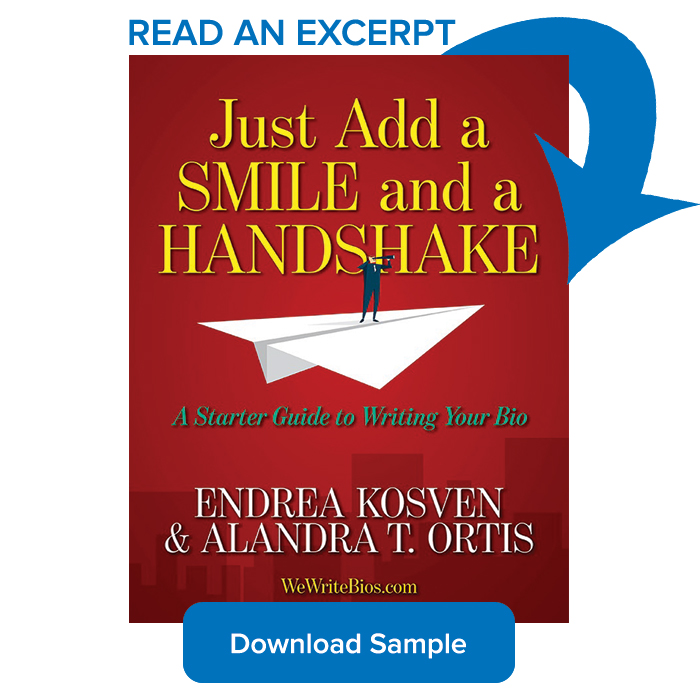
Learn more about our bio writing ebook in this short video !
Interested in having a professional bio written by one of our writers? Email us at [email protected] or give us a call at 818.488.1543.
- WeWriteBios.com staff
WeWriteBios.com is inspiration and brainchild of Endrea Kosven, founder and CEO of EDK and Company. With over 15 years as a PR and marketing professional in Los Angeles, she helps her clients succeed in their professional branding and marketing efforts.
- career change , CV , professional bio , resume
About us and this blog
We are a professional copywriting agency helping our clients maintain their brands through polished, creative content. Our services include professional bios, press kit development, company profiles, press releases, and more!
Request a free quote
Our bio writers craft compelling bios and profiles for use across websites, social media, and printed marketing communications. Learn how we can help you build your brand!

Subscribe To Our Newsletter
Thank you for subscribing, more from our blog.

Cover Letter Writers Can Help Land That Dream Job

The Genius of the Press Release Writer

Why Cover Letters Are a Secret Weapon in the Current Job Market

Breaking it Down: Sample Interior Designer Bio

Breaking it Down: Company Profile Example

Breaking it Down: Sample Finance Executive Bio

Breaking it Down: Sample Health Coach Bio
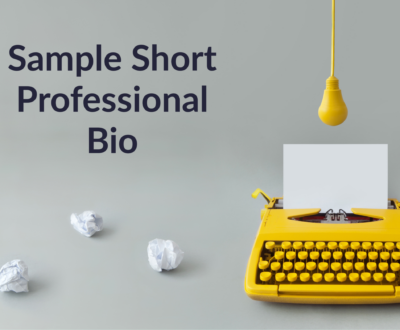
Breaking it Down: Sample Short Professional Bio
Recent posts.
- Cover Letter Writers Can Help Land That Dream Job October 19, 2023
- The Genius of the Press Release Writer August 18, 2023
- Why Cover Letters Are a Secret Weapon in the Current Job Market July 14, 2023
All Website Tags

Which three words would you use to describe yourself? Most of us have been asked this question, and many of us have fumbled through it awkwardly.
Coming up with a personal description can be daunting. But there are times when it’s essential - whether we’re updating our LinkedIn profiles, blogging for Medium or creating a business website of our own.
In this post, we’ll go over how to write a bio, step by step. To help guide you, we’ve also included a handy template, along with some professional bio examples for your inspiration. With these resources, you’ll find that writing a bio, as part of making a website , is much easier than you might think.
What is a bio?
Before you learn how to write a bio, you should have a clear understanding of what it is and why you need it.
In the world of literature, a personal biography can span the length of an entire novel, like Nelson Mandela’s Long Walk to Freedom or Malala Yousafzai’s I Am Malala . In the online world, however, a bio is a short paragraph in which you introduce yourself. Typically, people place bios on the About Us page of their professional website, as well as on their social media pages and other networking platforms.
What to include in a bio
Depending on your audience and goals, your bio can highlight your personal interests, your professional achievements or a mix of both. Here are some of the elements a bio might include:
Job title or workplace
University degree and other qualifications
Hometown or city of residence
Personal or professional goals
Mission statement and values
Skills and expertise
Interests and hobbies
The goal of writing a bio is to provide people with a snapshot of who you are. This is important for a variety of reasons, whether it’s drawing people toward your personal website or promoting your blog, attracting clients and business partners to your brand, or highlighting your achievements for job interviews.
How to write a short bio
The most effective online bios are both professional and concise. Here’s how to write a short professional bio that suits your website or brand:
Introduce yourself
State your company or brand name
Explain your professional role
Include professional achievements
Discuss your passions and values
Mention your personal interests
01. Introduce yourself
Begin your bio by stating your first and last name. If you’re writing in the third person, these should be the first two words of the paragraph. This makes your name easy for your audience to identify and remember. Your bio is a huge part of your personal branding efforts, and should start with a strong intro to make a positive impact.
02. State your company or brand name
Think about whether you want your bio to represent yourself on a personal level, or whether you’d like it to come across as more professional. If you have a personal brand or business - for example, a blog, freelance business or eCommerce site - be sure to mention your brand name at the beginning of your bio. Don’t be afraid if the name sounds simple or redundant. It’s perfectly fine, for instance, to say Mary Smith is the founder and CEO of Smith Digital.
Likewise, feel free to mention the name of another company or brand that you work for if you’d like to associate it with your professional accomplishments - e.g., Mary Smith is a consultant at Google and the founder and CEO of Smith Digital.
03. Explain your professional role
Next, briefly explain your current position. This is relevant whether you’re the founder of a company, a high-level specialist or a beginner in your field, and it can be similar to the description you have on your resume. Your website visitors won’t necessarily know what your job involves, so elaborating on your primary responsibilities helps paint a picture of who you are and what you have to offer. This can also be used, if needed for employment and recruitment opportunities. If you're a freelancer a strong bio can make all the difference in how successful sourcing work can be.

04. Include professional achievements
In addition to explaining what your job entails, highlight milestones that make you stand out. Even if you haven’t won an award or gained external recognition, you can discuss ways in which you’ve contributed to your professional role and touch on new ideas or approaches that you bring to the table.
05. Discuss your passions and values
Once you describe what you do and how you contribute to your role, you’ll need to explain the why . This is one of the most important elements to focus on as you consider how to write a bio.
Think about the values and passions underlying your work, as well as your professional philosophy. What gets you up in the morning? What’s the driving force behind what you do?
You can also think of this part of your professional bio as a kind of mission statement. Perhaps your mission is to serve others, contribute to society, grow your expertise or learn new skills. Whatever your reasons, expanding upon these ideas can help your audience get a better understanding of what truly matters to you. Don't be afraid to deploy storytelling in this part of creating your bio. Explore your narrative and then convey it.
06. Mention your personal interests
The most effective short bios will not only focus on your professional experience, but will also touch on what you like to do in your spare time. Consider mentioning:
Your family
Your hometown
Your hobbies
Side projects you’re working on
Transitioning to a more casual discussion of who you are outside of work is a great way to conclude your bio. This will present you as a more well-rounded person while making you relatable for your audience.
Professional bio template
As you go through the steps on how to write a bio, this handy template will help you get started:
Sentence 1: [Name] is a [job title] who [job description].
E.g., Lisa Green is an English teacher who teaches beginning to advanced literature courses for 10th and 11th grade students at Bloomfield High School.
Sentence 2: [Name] believes that [why you do the work you do].
E.g., Lisa believes that written and analytical skills are not only a fundamental part of academic excellence, but are also the building blocks of critical thinking in high school and beyond.
Sentence 3: [Name/pronoun] has [mention your achievements].
E.g., In addition to managing the English curriculum for the school, she runs an after school program where she works one-on-one with students.
Sentence 4: [Name/pronoun] is a [mention any relevant awards, training or honors].
E.g., She has also been nominated Teacher of the Year for two consecutive years.
Sentence 5: [Name/pronoun] holds a [insert degree] in [field of study] from [university].
E.g., Lisa holds a BA in Creative Writing and a Master’s Degree in Teaching from the University of Michigan.
Once you’ve filled in this template, put it all together into a single paragraph to create an initial framework for your professional biography. Note that you can shorten or expand upon this bio according to your unique needs.
![bio biography or A professional bio template graphic that says [name] is a [job title] who [job description]. [Name] has [Academic Qualifications] from [University]...](https://static.wixstatic.com/media/c7b0f0_b662e4ec234b4890ad91d369cf1c5edc~mv2.png/v1/fill/w_924,h_560,al_c,q_90,enc_auto/c7b0f0_b662e4ec234b4890ad91d369cf1c5edc~mv2.png)
Professional bio examples
Now that you know the basics of writing a professional bio, here are some short bio examples to inspire you. You can use these examples as additional templates for guidance as you craft your own personal biography.
Like the creators of these examples, you can place your bio on your personal or professional website and, later, revise the structure for other online platforms.
01. Bristol Guitar Making School

Of all the professional bio examples, Alex Bishop’s content exudes passion. Strategically placing the bio on the About page of his small business website , he highlights his skills and explains why he finds his work meaningful. In particular, we love his description of why he chose to pursue guitar making:
“My passion as a guitar maker comes from a life-long obsession with making things. From a young age I have always tried to manipulate objects and materials in order to create something entirely different. I find that working with wood is a way for me to connect with nature. The simple act of shaping wood to make something functional or beautiful brings me endless satisfaction.”
He also lists his accomplishments and awards, adding credibility to his business and building trust among prospective clients.
02. Alexandra Zsigmond

As someone who has served as art director for both The New York Times' opinion section and The New Yorker , it's no surprise that Alexandra Zsigmond's bio is thorough and detailed. Providing statistics or reflections on the things she achieved in her career is a clever way to demonstrate her value without saying so directly. As she explains:
"She has collaborated with a roster of over 1000 artists worldwide and art directed over 4000 editorial illustrations. She is known for greatly expanding the range of visual contributors to the Times, drawing equally from the worlds of contemporary illustration, fine art, animation, and comics."
03. Amanda Shields Interiors

Amanda Shields provides us with another effective bio example on her interior design website. Importantly, she spices up her bio by explaining how home decor aligns with her personal life and why it’s so close to her heart as a mother and entrepreneur:
"After working as a product designer for numerous retailers over the years, and after I had my first child, I decided to take the plunge and start my own home staging business…. Coincidentally, a month later I discovered I was pregnant with my second child. I loved the new challenges I faced as a new entrepreneur and mom and it didn't take long for me to discover that this was my calling…. I felt the need to expand my business and launch Amanda Shields Interiors as its own entity to focus specifically on residential interiors and design."
By placing this content on her website’s About page, she provides potential clients with insights into her expertise and professional experience. She expands upon the choices she made along her career path, strategically making note of her achievements and acquired skills along the way.
Tips for writing a bio
As you write your bio using the professional template above, make sure to keep the following tips in mind:
Keep it concise: Your bio should be sufficiently explanatory, but it should also be short and to the point. A good rule of thumb is to keep each element of your bio - from your job description to your mission statement and hobbies - to about 1-2 sentences. That way, you’ll end up with a brief paragraph that holds your readers’ attention without rambling on.
Consider your audience: The voice and tone you choose for your biography largely depends on your audience and personal goals. If you’re looking for a job and are writing primarily for recruiters, you’ll want to use a serious, professional tone. On the other hand, if you’re creating an Instagram bio , consider using more casual, conversational language that reflects your personality.
Add humor: Relatedly, consider adding humor when appropriate. This is especially valuable if you’ve founded your own business or created your own website , as it can give you a distinct brand identity while helping your audience build a stronger sense of connection with your brand.
Link to your website: When writing a bio for a platform other than your own website - a social media page, another company page, or a guest blog or publication - remember to include a link to your website. This will help you promote your website while highlighting your professionalism and authority.
Adapt for different platforms: You’ll most likely need to adapt the length and writing style of your biography to suit different platforms. For example, you may place a longer bio on your website’s About page and a shorter one on your LinkedIn page. In these cases, use the same main principles for writing a bio while scaling down the most important elements.
By following these tips, you can create a powerful bio that helps you stand out in your field and allows your audience to get to know you better.
How to write a bio in four sentences or less
Really need to create a super short bio? We'd suggest following some of the tips above, just condensing them into less word for a short bio that still makes impact.
But if we really had to choose we'd say focus on - you, your professional role and company. That condenses everything that matters for bio into three sentences. Humor, creativity and uniqueness still all matter - just use fewer words to convey them.
Creating a bio for your website
As we’ve noted in the examples above, one of the most strategic places to put your bio is on your website - so be sure to consider it within your web design plans. Whether the goal of your site is to start and promote your business , showcase your design portfolio or display your resume, including a bio gives your audience a glimpse into the person behind your content. It can also kickstart your professional growth . Show the world what you do, how you do it and why it matters, and people will be drawn to your passion and inspired by your experience.
Pro tip: You can add a bio to many different types of websites, so using templates can help you create yours faster. For example, if you're creating a portfolio website , explore portfolio website templates to help you get started.
Creating a bio for social media
Crafting a professional bio for social media is vital as it introduces you or your brand, and it builds credibility and trust. A well-written bio establishes your expertise, attracts the right audience, and fosters engagement. It helps maintain a consistent brand image, optimizes search and discovery, and opens doors to networking and career opportunities. A compelling bio delivers a concise, informative snapshot of who you are, what you do, and the value you bring, leaving a lasting impression on visitors and potential collaborators alike.
You may need to edit your bio depending on which social media platform you plan to use it on. Some of the most popular ones include Twitter, Facebook, Instagram and TikTok. Focus on getting your bio right on the platforms you plan to focus your personal or brand social media marketing efforts on.
Writing a bio with AI
If you're looking to write your bio fast while creating your website, consider using an AI text generator to build your draft. You'll still need to make sure it goes through. an intensive editing process, so that it really captures the essence of who you are and your professional skills. A bio is about much more than just basic information, so don't forget to include the storytelling too. Build a website with Wix and you can make use of the in-built AI text generator within its Editor .
Why good bios are important for a professional
In a world where first impressions matter, a well-crafted bio can make a significant impact in establishing trust and credibility with potential clients, employers or collaborators. It also offers insight into your personality and values, helping to forge authentic connections with your audience. It acts as a powerful tool for personal branding, allowing you to differentiate yourself in a competitive landscape and leave a memorable impression.
A strong bio also serves as a gateway to opportunities, whether it's securing new clients, landing job interviews or establishing partnerships. It acts as a professional introduction, allowing you to showcase your expertise. A polished and impactful bio is essential for you to effectively communicate your professional identity and stand out in your field.
Writing a bio without experience
Writing a bio when you don't yet have experience can be challenging, but it's an opportunity to showcase your potential and aspirations.
Begin by highlighting your educational background, skills and any relevant coursework or projects you've completed. Focus on your passions, interests and personal qualities that make you unique. Consider including volunteer work, internships or extracurricular activities that demonstrate your commitment and initiative. Emphasize your eagerness to learn and grow in your chosen field and express your future goals and aspirations. Don't be afraid to be honest about your current stage and your willingness to gain experience and develop professionally.
If you don't know what to write in your bio, start by brainstorming your key experiences, achievements, skills and personal attributes. Consider what sets you apart and what you want others to know about you. Look for inspiration from other bios or profiles in your field, and consider seeking feedback from friends, mentors or colleagues. Don't hesitate to highlight your passions, interests and goals, as well as any unique experiences or perspectives you bring to the table. Remember to keep it concise and engaging, and don't be afraid to revise and refine your bio until it accurately represents you.
How to write a bio FAQ
What is a short bio.
A short bio, short for biography, is a concise summary of a your life or professional background. It provides a brief overview of your key achievements, qualifications, experiences, and relevant details. Typically written in the third person, a short bio is often used in various contexts, such as professional profiles, social media accounts, introductions for speaking engagements, author descriptions, and other situations where a brief introduction is required. The length of a short bio can vary, but it's generally kept to a few sentences or a short paragraph to provide a snapshot of the person's background and expertise.
How do I write a bio about myself?
What should i include in a short bio, how do you write a fun bio for work, how do i make my bio stand out, related posts.
How to start a pressure washing business in 10 steps
How to start a coaching business in 12 steps (a complete guide)
How to start a business in California in 7 steps
Was this article helpful?
- PRO Courses Guides New Tech Help Pro Expert Videos About wikiHow Pro Upgrade Sign In
- EDIT Edit this Article
- EXPLORE Tech Help Pro About Us Random Article Quizzes Request a New Article Community Dashboard This Or That Game Popular Categories Arts and Entertainment Artwork Books Movies Computers and Electronics Computers Phone Skills Technology Hacks Health Men's Health Mental Health Women's Health Relationships Dating Love Relationship Issues Hobbies and Crafts Crafts Drawing Games Education & Communication Communication Skills Personal Development Studying Personal Care and Style Fashion Hair Care Personal Hygiene Youth Personal Care School Stuff Dating All Categories Arts and Entertainment Finance and Business Home and Garden Relationship Quizzes Cars & Other Vehicles Food and Entertaining Personal Care and Style Sports and Fitness Computers and Electronics Health Pets and Animals Travel Education & Communication Hobbies and Crafts Philosophy and Religion Work World Family Life Holidays and Traditions Relationships Youth
- Browse Articles
- Learn Something New
- Quizzes Hot
- This Or That Game
- Train Your Brain
- Explore More
- Support wikiHow
- About wikiHow
- Log in / Sign up
- Education and Communications
- Autobiographies
- Personal Profiles
How to Write Engaging Personal & Professional Bios (with Examples)
Last Updated: August 24, 2023 Fact Checked
Writing Personal and Professional Bios
Writing student bios, making your bio stand out, sample bios.
This article was co-authored by Melody Godfred, JD and by wikiHow staff writer, Glenn Carreau . Melody Godfred is a Career Coach, Entrepreneur, and Founder of Write In Color, a full-service resume and career development company that specializes in developing compelling personal narratives and brands. With over ten years of experience, Melody has worked with clients at entertainment and media companies including Apple, Disney, Fox, Netflix, Riot Games, Viacom, and Warner Bros, among others. The Muse invited Melody and Write In Color to serve as one of its 30 trusted career counselors (out of 3,000) to provide one-on-one coaching and resume services to the platform's more than four million active users. Melody earned a JD from Loyola Marymount University and BS from the University of Southern California. There are 7 references cited in this article, which can be found at the bottom of the page. This article has been fact-checked, ensuring the accuracy of any cited facts and confirming the authority of its sources. This article has been viewed 5,728,860 times.
Personal bios are a great way to show people who you are and what you do. Whether writing a bio about yourself for a personal or professional website, a college application, or a social media account, bios are an important part of connecting with your audience or customer base. It’s important to take your time and be thoughtful as you write to ensure you get the right message across! Read on for a complete guide to writing a personal (or professional) bio about yourself, along with writing tips to make it as engaging as possible.
Things You Should Know
- Start with your first and last name in a quick introductory sentence. Then, explain your job, greatest achievements, and professional mission statement.
- Expand on personal details, including where you’re from, your educational background, and a quick summary of passions that aren’t related to your job.
- Mention any projects you’re working on and end the bio with your contact information. Write in the third-person perspective unless it’s for social media.

- The difference between personal and professional bios is all in the tone you use. Both cover your job and skills, but the bio you write for a personal website might sound less formal than the one you write for a job application.
- As you write your bio, adjust your tone to make your bio appropriately formal, funny, professional, or personal.
- If you can’t figure out what to write, check out bios from other people in your field and get a sense of their writing strategy. You can use their bios as models and write yours based on their overall structure.

- For example, begin a third-person bio with a sentence like, "Joann Smith is a graphic designer in Boston," and a first-person bio with "I am a graphic designer in Boston."

- For example, a simple yet solid introduction sentence could be, “Dan Keller is a columnist for the Boulder Times.”
- Avoid writing a nickname in your bio. Even if your bio isn’t strictly for professional use, it’s best to treat it like a formal introduction to other people.
- Be sure to mention your company or brand within your introduction. You might work for a company or own your own business with a personal brand.

- For example, “Dan Keller is a columnist for the Boulder Times. He specializes in writing public interest stories on the latest technology.
- Both personal and professional bios typically include job information; personal bios simply present that information a little more informally.
- If you’re writing about your job informally, you might write something like, “Joann Smith is a passionate knitter who also happens to own and run her paper supply company.”

- “Dan Keller is a columnist for the Boulder Times. His 2011 series "All that and More" earned him Boulder’s prestigious “Up-and-Comer” award for innovation.”
- Don’t make up accomplishments if you don’t have anything notable to add and only include achievements that relate to the career information or skills discussed in the bio.
- Avoid buzzwords like "innovative," "experienced," "creative," and so on, which are often so overused that they don’t mean anything to people. Show readers what you can do through specific details, not catchy phrases.

- For example, “Dan is committed to helping people understand and embrace the true power of technology.”

- For example: “When he isn’t glued to a computer screen, Dan spends time working in the garden, learning French, and trying very hard not to be the worst pool player in the Rockies.”
- The details you share can vary by bio. For a strictly personal bio, include details like hobbies, personal beliefs, and mottos.
- For a bio that falls between "professional" and "personal," try sharing details that give a sense of who you are but won’t alienate others.
- Avoid self-deprecating comments and details that are too intimate or potentially embarrassing for you or your audience.

- For example: “Dan is currently working on a memoir.”
- Keep this part of your bio short and sweet! A sentence is two is all you need.

- If you publish this bio online, format your email address carefully to avoid spam. Many people write email addresses online like: “Greg (at) fizzlemail (dot) com.”
- This clearly tells readers how to spell out your email without making it easy for spammers and bots to copy and use your information.

- Ask your friends and family (especially anyone who is a strong writer) to proofread your bio and give you feedback. A fresh pair of eyes can catch mistakes that you may miss!
- Online editing software like Grammarly can grade your piece in terms of readability and suggest minor improvements.
- Every once in a while, go back and update your bio. By putting in a little work frequently to keep it up to date, you'll save yourself a lot of work when you need to use it again.

- Chronological. Start at the story's beginning and end at the end. It’s simple and works well if you’ve had an interesting life that has taken you from points A to B to C in unusual or impressive ways.
- Circular. Start at an important moment (D), then backtrack to the beginning (A), and explain all the events leading up to that moment (B, C), eventually bringing the reader full circle. This is good for building suspense!
- Zoomed In. Focus on one critical event (C) to symbolically tell a larger story. Use a few small surrounding details (A, B, D) to orient the reader, but give that one moment enough emphasis to stand on its own.

- Avoid statements like, "UCSF has one of the top-ranked research-based med schools in the world, which would provide me with the foundation necessary to achieve my lifelong dream of becoming a doctor."
- Instead, write something like, “Watching a trauma surgeon save my brother’s life is a moment I’ll never forget. Since then, I’ve known undoubtedly that I would dedicate my life to medicine. My brother was lucky that his surgeon studied at one of the best programs in the country. By doing the same, I hope to one day mean to another family what Dr. Heller does to mine."

- Avoid statements like, "Having had a rather minimalistic upbringing, I find that I continue to assiduously value hard work and frugality above all else."
- Instead, try something like, "Growing up very poor taught me that hard work and thrift are sometimes the only things a person can afford."
- Well-written ideas make you seem far more intelligent than big words do. Focus on expressing yourself clearly, and don’t worry about the syllable count!

- Avoid statements like, "I learned a lot from my experience as a camp counselor."
- Instead, try something like, "I came out of my time as a camp counselor with a better understanding of empathy than before. Now, when my younger sister acts up, I know how to help her without sounding bossy or controlling."

- Different types of bio have different word count expectations. For instance, the average brief personal bio is around 250 words. For a resume or job search, it’s okay to have a personal bio of around 300 to 500 words.
- For longer personal bios (ones you might post on an “about me” page for a professional website, for example), aim for around 1,000 to 2,000 words. Include all the details you can, but keep them concise.
- Some social media sites, such as Twitter, restrict your bio to a certain number of words or characters. Ensure that you make the most of that space.

- For example, Tom Hank’s personal bio on Twitter reads, “I'm that actor in some of the movies you liked and some you didn't. Sometimes I'm in pretty good shape, other times I'm not. Hey, you gotta live, you know?”

- Passive: "The window was broken by the zombie."
- Active: "The zombie broke the window."
- The difference between these sentences is stark: in the first, you have no idea whether the window just happened to be broken. The second is obvious: the zombie broke the window, and you need to hit the road.

- Avoid statements like, "Reading The Great Gatsby was a pivotal moment in my life that made me totally rethink my preconceptions about what it means to live in modern America. Thanks to that assignment, I want to pursue American Studies."
- Instead, try something like, "My family’s ties to this country aren’t glamorous. We didn’t arrive on the Mayflower or have our surname butchered at Ellis Island. We settled in four states across the Midwest, where we’ve lived happily for over 100 years. The magic of that simple act isn’t lost on me, which is why I’ve chosen to major in American Studies."

- For example, if you’re writing an Instagram bio, include a link to your personal website too—especially if there’s a longer and more detailed bio for readers to check out there.
- Include a brief call-to-action, too! For example, if you have contact info, you might write “Contact me using the following” before you add the links.

- On your website, longer bios (between 1,500 and 2,000 words) will have the best online optimization. If your bio needs to be shorter, be sure to at least use third-person POV, since your name is another keyword.
- For example, your website’s “About” page could easily support a 1,500+ word bio. However, from there, you’d need to edit that bio down to a few sentences (a short paragraph) for your LinkedIn profile.

Community Q&A

- Throughout the process, think back to the purpose and audience you identified in Step 1. This will help guide your writing. Thanks Helpful 0 Not Helpful 0
- If you're writing online, include hyperlinks to things you mention, such as projects you worked on or a personal blog you keep. Thanks Helpful 0 Not Helpful 0

You Might Also Like

- ↑ http://theundercoverrecruiter.com/8-steps-writing-bio-pro-chris-brogan-fact/
- ↑ http://michaelbmaine.com/home/2012/12/13/how-to-write-a-personal-bio
- ↑ https://www.pullmanfoundation.org/professional-bio-writing-101/
- ↑ https://www.collegerecruiter.com/blog/2011/01/28/how-to-write-a-personal-bio
- ↑ https://thewritepractice.com/how-to-write-a-bio/
- ↑ https://weareindy.com/blog/freelance-bio-examples-how-to-write-an-eye-catching-bio
- ↑ https://searchengineland.com/guide/what-is-seo
About This Article

When you write a personal bio, write in the third person so it sounds more objective and professional. Start with a sentence that includes your name and what you do for a living. Then, mention your most important accomplishments that are relevant to your field of work. Briefly mention a couple of your hobbies or interests to make your bio more relatable. End with a sentence on any big projects you’re currently working on. Try to keep your bio around 250-500 words. For help writing a personal bio for college applications or social media, keep reading! Did this summary help you? Yes No
- Send fan mail to authors
Reader Success Stories
Jun 7, 2017
Is this article up to date?

Jan 6, 2017
John Wright
Oct 4, 2016
Gary Workman
Aug 24, 2019
May 24, 2018

Featured Articles

Trending Articles

Watch Articles

- Terms of Use
- Privacy Policy
- Do Not Sell or Share My Info
- Not Selling Info
Keep up with tech in just 5 minutes a week!
What Is Biography? Definition, Usage, and Literary Examples
Biography definition.
A biography (BYE-og-ruh-fee) is a written account of one person’s life authored by another person. A biography includes all pertinent details from the subject’s life, typically arranged in a chronological order. The word biography stems from the Latin biographia , which succinctly explains the word’s definition: bios = “life” + graphia = “write.”
Since the advent of the written word, historical writings have offered information about real people, but it wasn’t until the 18th century that biographies evolved into a separate literary genre. Autobiographies and memoirs fall under the broader biography genre, but they are distinct literary forms due to one key factor: the subjects themselves write these works. Biographies are popular source materials for documentaries, television shows, and motion pictures.
The History of Biographies
The biography form has its roots in Ancient Rome and Greece. In 44 BCE, Roman writer Cornelius Nepos published Excellentium Imperatorum Vitae ( Lives of the Generals ), one of the earliest recorded biographies. In 80 CE, Greek writer Plutarch released Parallel Lives , a sweeping work consisting of 48 biographies of famous men. In 121 CE, Roman historian Suetonius wrote De vita Caesarum ( On the Lives of the Caesars ), a series of 12 biographies detailing the lives of Julius Caesar and the first 11 emperors of the Roman Empire. These were among the most widely read biographies of their time, and at least portions of them have survived intact over the millennia.
During the Middle Ages, the Roman Catholic Church had a notable influence on biographies. Historical, political, and cultural biographies fell out of favor. Biographies of religious figures—including saints, popes, and church founders—replaced them. One notable exception was Italian painter/architect Giorgio Vasari’s 1550 biography, The Lives of the Most Excellent Painters, Sculptors, and Architects , which was immensely popular. In fact, it is one of the first examples of a bestselling book.
Still, it wasn’t until the 18th century that authors began to abandon multiple subjects in a single work and instead focus their research and writing on one subject. Scholars consider James Boswell’s 1791 The Life of Samuel Johnson to be the first modern biography. From here, biographies were established as a distinct literary genre, separate from more general historical writing.
As understanding of psychology and sociology grew in the 19th and early 20th centuries, biographies further evolved, offering up even more comprehensive pictures of their subjects. Authors who played major roles in this contemporary approach to biographing include Lytton Strachey, Gamaliel Bradford, and Robert Graves.
Types of Biographies
While all biographical works chronicle the lives of real people, writers can present the information in several different ways.
- Popular biographies are life histories written for a general readership. The Immortal Life of Henrietta Lacks by Rebecca Skloot and Into the Wild by Jon Krakauer are two popular examples.
- Critical biographies discuss the relationship between the subject’s life and the work they produced or were involved in; for example, The Billionaire Who Wasn’t: How Chuck Feeney Secretly Made and Gave Away a Fortune by Conor O’Clery and Unpresidented: A Biography of Donald Trump by Martha Brockenbrough.
- Historical biographies put greater understanding on how the subject’s life and contributions affected or were affected by the times in which they lived; see John Adams by David McCullough and Catherine the Great by Peter K. Massie.
- Literary biographies concentrate almost exclusively on writers and artists, blending a conventional narrative of the historical facts of the subject’s life with an exploration of how these facts impacted their creative output. Some examples include Savage Beauty: The Life of Edna St. Vincent Millay by Nancy Milford and Jackson Pollock: An American Saga by Gregory White Smith and Steven Naifeh.
- Reference biographies are more scholarly writings, usually written by multiple authors and covering multiple lives around a single topic. They verify facts, provide background details, and contribute supplemental information resources, like bibliographies, glossaries, and historical documents; for example, Black Americans in Congress, 1870-2007 and the Dictionary of Canadian Biography .
- Fictional biographies, or biographical novels, like The Other Boleyn Girl by Philippa Gregory, incorporate creative license into the retelling of a real person’s story by taking on the structure and freedoms of a novel. The term can also describe novels in which authors give an abundance of background information on their characters, to the extent that the novel reads more like a biography than fiction. An example of this is George R.R. Martin’s Fire and Blood , a novel detailing the history of a royal family from his popular A Song of Ice and Fire
Biographies and Filmed Entertainment
Movie makers and television creators frequently produce biographical stories, either as dramatized productions based on real people or as nonfiction accounts.
Documentary
This genre is a nonfictional movie or television show that uses historical records to tell the story of a subject. The subject might be a one person or a group of people, or it might be a certain topic or theme. To present a biography in a visually compelling way, documentaries utilize archival footage, recreations, and interviews with subjects, scholars, experts, and others associated with the subject.
Famous film documentaries include Grey Gardens, a biography of two of Jacqueline Kennedy’s once-wealthy cousins, who, at the time of filming, lived in squalor in a condemned mansion in the Hamptons; and I Am Not Your Negro , a biography of the life and legacy of pioneering American author James Baldwin.
Television documentary series tell one story over the course of several episodes, like The Jinx : The Life and Deaths of Robert Durst , a biography of the real estate heir and alleged serial killer that focused on his suspected crimes. There are many nonfiction television shows that use a documentary format, but subjects typically change from one episode to the next, such as A&E’s Biography and PBS’s POV .
These films are biographical motion pictures, written by screenwriters and performed by actors. They often employ a certain amount of creative liberty in their interpretation of a real life. This is largely done to maintain a feasible runtime; capturing all of the pivotal moments of a subject’s life in a 90- or 120-minute movie is all but impossible. So, filmmakers might choose to add, eliminate, or combine key events and characters, or they may focus primarily on one or only a few aspects of the subject’s life. Some popular examples: Coal Miner’s Daughter , a biography of country music legend Loretta Lynn; Malcom X , a biopic centered on the civil rights leader of the same name; and The King’s Speech , a dramatization of Prince Albert’s efforts to overcome a stutter and ascend the English throne.
Semi-fictionalized account
This approach takes a real-life event and interprets or expands it in ways that stray beyond what actually happened. This is done for entertainment and to build the story so it fits the filmmaker’s vision or evolves into a longer form, such as a multi-season television show. These accounts sometimes come with the disclaimer that they are “inspired by true events.” Examples of semi-fictionalized accounts are the TV series Orange Is the New Black , Masters of Sex , and Mozart of the Jungle —each of which stem from at least one biographical element, but showrunners expounded upon to provide many seasons of entertainment.
The Functions of Biography
Biographies inform readers about the life of a notable person. They are a way to introduce readers to the work’s subject—the historical details, the subject’s motivations and psychological underpinnings, and their environment and the impact they had, both in the short and long term.
Because the author is somewhat removed from their subject, they can offer a more omniscient, third-person narrative account. This vantage point allows the author to put certain events into a larger context; compare and contrast events, people, and behaviors predominant in the subject’s life; and delve into psychological and sociological themes of which the subject may not have been aware.
Also, a writer structures a biography to make the life of the subject interesting and readable. Most biographers want to entertain as well as inform, so they typically use a traditional plot structure—an introduction, conflict , rising of tension, a climax, a resolution, and an ending—to give the life story a narrative shape. While the ebb and flow of life is a normal day-to-day rhythm, it doesn’t necessarily make for entertaining reading. The job of the writer, then, becomes one of shaping the life to fit the elements of a good plot.
Writers Known for Biographies
Many modern writers have dedicated much of their careers to biographies, such as:
- Kitty Kelley, author of Jackie Oh! An Intimate Biography; His Way: The Unauthorized Biography of Frank Sinatra ; and The Family: The Real Story of the Bush Dynasty
- Antonia Fraser, author of Mary Queen of Scots ; Cromwell; Our Chief of Men ; and The Gunpowder Plot: Terror and Faith in 1605
- David McCullough, author of The Path Between the Seas; Truman ; and John Adams
- Andrew Morton, author of Diana: Her True Story in Her Own Words; Madonna ; and Tom Cruise: An Unauthorized Biography
- Alison Weir, author of The Six Wives of Henry VIII; Eleanor of Aquitaine: By the Wrath of God; Queen of England ; and Katherine Swynford: The Story of John of Gaunt and His Scandalous Duchess
Examples of Biographies
1. James Boswell, The Life of Samuel Johnson
The biography that ushered in the modern era of true-life writing, The Life of Samuel Johnson covered the entirety of its subject’s life, from his birth to his status as England’s preeminent writer to his death. Boswell was a personal acquaintance of Johnson, so he was able to draw on voluminous amounts of personal conversations the two shared.
What also sets this biography apart is, because Boswell was a contemporary of Johnson, readers see Johnson in the context of his own time. He wasn’t some fabled figure that a biographer was writing about centuries later; he was someone to whom the author had access, and Boswell could see the real-world influence his subject had on life in the here and now.
2. Sylvia Nasar, A Beautiful Mind
Nasar’s 1998 Pulitzer Prize-nominated biography of mathematician John Nash introduced legions of readers to Nash’s remarkable life and genius. The book opens with Nash’s childhood and follows him through his education, career, personal life, and struggles with schizophrenia. It ends with his acceptance of the 1994 Nobel Prize for Economics. In addition to a Pulitzer nomination, A Beautiful Mind won the National Book Critics Circle Award for Biography, was a New York Times bestseller, and provided the basis for the Academy Award-winning 2001 film of the same name.
3. Catherine Clinton, Harriet Tubman: The Road to Freedom
Clinton’s biography of the abolitionist icon is a large-scale epic that chronicles Tubman’s singular life. It starts at her birth in the 1820s as the slave Araminta Ross, continuing through her journey to freedom; her pivotal role in the Underground Railroad; her Moses-like persona; and her death in 1913.
Because Tubman could not read or write, she left behind no letters, diaries, or other personal papers in her own hand and voice. Clinton reconstructed Tubman’s history entirely through other source material, and historians often cite this work as the quintessential biography of Tubman’s life.
4. Megan Mayhew Bergman, Almost Famous Women
Almost Famous Women is not a biography in the strictest sense of the word; it is a fictional interpretation of real-life women. Each short story revolves around a woman from history with close ties to fame, such as movie star Marlene Dietrich, Standard Oil heiress Marion “Joe” Carstairs, aviatrix Beryl Markham, Oscar Wilde’s niece Dolly, and Lord Byron’s daughter Allegra. Mayhew Bergman imagines these colorful women in equally colorful episodes that put them in a new light—a light that perhaps offers them the honor and homage that history denied them.
Further Resources on Biography
Newsweek compiled their picks for the 75 Best Biographies of All Time .
The Open Education Database has a list of 75 Biographies to Read Before You Die .
Goodreads put together a list of readers’ best biography selections .
If you’re looking to write biographies, Infoplease has instructions for writing shorter pieces, while The Writer has practical advice for writing manuscript-length bios.
Ranker collected a comprehensive list of famous biographers .
Related Terms
- Autobiography
- Short Story
- Dictionaries home
- American English
- Collocations
- German-English
- Grammar home
- Practical English Usage
- Learn & Practise Grammar (Beta)
- Word Lists home
- My Word Lists
- Recent additions
- Resources home
- Text Checker
Definition of biography noun from the Oxford Advanced Learner's Dictionary
- Boswell’s biography of Johnson
- a biography by Antonia Fraser
- The book gives potted biographies of all the major painters.
- blockbuster
- unauthorized
- biography by
- biography of
Definitions on the go
Look up any word in the dictionary offline, anytime, anywhere with the Oxford Advanced Learner’s Dictionary app.


Rock Hudson’s long-secret “gay confession” to wife resurfaces in juicy Old Hollywood biography
It might seem like Hollywood runs on gossip these days, but modern-day Tinsel Town has got nothing on the industry’s Golden Age.
Among that era’s biggest “open secrets” was the sexuality of silver screen idol Rock Hudson, the heartthrob who spent they heyday of his career in the closet. It wasn’t until after his AIDS diagnosis and tragic passing in 1985 that others began to discuss his dual life more publicly, like in last year’s fantastic documentary Rock Hudson: All That Heaven Allowed .
But just because they weren’t openly talking about it back then doesn’t mean some folks didn’t try to!
How about we take this to the next level? Subscribe to our newsletter for a refreshing cocktail (or mocktail) of LGBTQ+ entertainment and pop culture, served up with a side of eye-candy. Subscribe to our Newsletter today
That goes especially for proto- National Enquirer gossip rag, Confidential , which (allegedly) frequently attempted to publish tell-all pieces about Hudson’s sexuality and romantic flings—most of which the actor’s agent Henry Willson would squash in exchange for other tabloid news items (again: allegedly !).
How Rock Hudson’s sexuality became blackmail fodder in his divorce settlement
Now, thanks to The Fixer: Moguls, Mobsters, Movie Stars, And Marilyn , a juicy new biography about notorious LA private detective Fred Otash who worked with Confidential , we have even more details about the shocking lengths the industry went to keep Hudson’s private life private.
Co-authored by Josh Young and Manfred Westphal—who had the blessing of Otash’s daughter to examine the detective’s never-before-seen case files—one of The Fixer ‘s biggest revelations involves the P.I., Hudson and his ex-wife Phyllis Gates, blackmail, and star’s secretly recorded, previously unheard gay confession.
In the ’50s, as more rumors began to swirl about Hudson’s sexuality, his agent Henry Wilson (who was also gay) arranged for the star to marry Gates, his then secretary, to keep the press at bay.
“I was very much in love,” Gates once told Hudson’s posthumous biographer . “I thought he would be a wonderful husband. He was charming, his career was red hot, he was gorgeous. How many women would have said no?”
Related PHOTOS: 25 Rock Hudson pics that prove he was big in all the right places Standing 6’4″, Rock Hudson was a whole lot of Hollywood. Here’s a look back at his life, both on and off screen.
However, their arrangement gradually lost its allure, and Gates filed for divorce in 1958, “shaken” to learn their relationship was a “fanciful farce,” according to the book. (For the record, it’s also been reported that Gates was a lesbian.) But when it became clear she’d be left with nothing once the marriage ended, the former Mrs. Hudson and her team resorted to more drastic measures.
She brought on personal attorney Arthur Crowley to help with the divorce proceedings, who in turn reached out to Otash to dig up any evidence of Hudson’s sexuality. The plan: If Gates wasn’t financially supported by the actor, the truth of his double-life would be leaked to the press. Textbook extortion!
Eventually, Otash convinced Gates to take part in a sting operation that would—excuse the pun—put her between Rock and a hard place. Working off a script written by the P.I., she would confront Hudson about his sexuality all while secretly recording him.
Related Rock Hudson winked at rumors about his sexuality in this classic rom-com In ‘Pillow Talk,’ the closeted actor played a straight guy who pretends to be gay.
Rock Hudson’s secretly recorded “gay confession” appears in new book
Now, The Fixer publishes a new look at the the purported transcript of their conversation…
Referring to a Rorschach test Hudson had recently taken, Gates started with the following:
“You told me you saw thousands of butterflies and also snakes. [A therapist] told me in my analysis that butterflies mean femininity and snakes represent the male penis. I’m not condemning you, but it seems that as long as you recognize your problem, you would want to do something about it.”
She pressed on: “Everyone knows that you were picking up boys off the street shortly after we were married and have continued to do so, thinking that being married would cover up for you.”
“I have never picked up any boys on the street,” Hudson responded. “I have never picked up any boys in a bar, never. I have never picked up any boys, other than to give them a ride.”
But eventually, Hudson broke down, according to the book. “I never felt we were together on anything,” he said to Gates through tears. “I never felt you loved me.”
“And that is why you never touched me?” she replied. “Rock, when we came back from our honeymoon you never made love to me for one whole month. I was always here, and I always wanted you. At first, I would come to bed, and you would have a book in your face… People sense these things… A man has to have a sexual outlet. You should have picked me up and carried me into bed, but you never touched me.”
Allegedly, that’s when Hudson confessed to Gates he had a homosexual affair the day after they were married.
As The Fixer explains, that transcript was used to pressure Hudson and his team into agreeing on a financial settlement. In the end, Gates received their Hollywood Hills home and $250 a week for 10 years, on the condition she did not re-marry—a total that would come to roughly $1.3 million adjusted for inflation.
“I had the power to destroy Rock and I didn’t use it,” Gates wrote in her 1987 autobiography . “To have exposed his other life would have been vicious and vindictive. I faced enough trouble rebuilding my life without bearing that guilt.”
Phyllis Gates died of lung cancer at age 80 in 2006.
Related Director Stephen Kijak on Rock Hudson’s one true love, cut scenes & his creepy talent agent A conversation with the director of “Rock Hudson: All That Heaven Allowed” reveals how the Hollywood heartthrob captivated fans.
The Fixer ‘s skewed look at Hollywood private investigator Fred Otash
“Fred Otash fought to get Phyllis Gates what she deserved in their divorce settlement when Rock was kicking her to the curb and refusing to support her,” The Fixe r’s co-author Josh Young recently told Fox News . “It was surprising to learn what an advocate he was for women and how interesting those cases were.”
And, sure, that’s one way to look at it. The book goes on to recount numerous ways Otash (who died in 1992) supposedly worked with and in favor of famous figures—even reportedly recording Marilyn Monroe’s affair with JFK, as well are her dying breaths—but others have been quick to put out he wasn’t such a hero.
Author James Ellroy famously called Otash a “con man” and a “bullsh*tter.” After basing some of his noir novel L.A. Confidential on info gathered from Otash, the writer had this to say about the P.I. : “He did a lot of bad things [including] revealing secret details, mostly sexual in nature, about the lives of celebrated people, causing them to endure personal shame, emotional hardship, financial privation—and doing this for a living…”
So, yeah, The Fixer: Moguls, Mobsters, Movie Stars, And Marilyn , might be chockfull of deliciously dishy Old Hollywood stories we love to read about, but, should you choose to crack the book open yourself, just be mindful of who’s telling whose story here!
Related 10 juicy, must-read memoirs about the secret (and not-so-secret) history of gay Hollywood From the first openly gay star to every A-Lister’s favorite rent boy, these reads explore gay old days of Tinseltown.

We've detected unusual activity from your computer network
To continue, please click the box below to let us know you're not a robot.
Why did this happen?
Please make sure your browser supports JavaScript and cookies and that you are not blocking them from loading. For more information you can review our Terms of Service and Cookie Policy .
For inquiries related to this message please contact our support team and provide the reference ID below.

IMAGES
VIDEO
COMMENTS
Biography. A biography, or simply bio, is a detailed description of a person's life. It involves more than just basic facts like education, work, relationships, and death; it portrays a person's experience of these life events. Unlike a profile or curriculum vitae ( résumé ), a biography presents a subject's life story, highlighting various ...
2. Introduce yourself… like a real person. This is one of the most important pieces of understanding how to write a personal biography. Always start with your name. When many people start learning how to write a bio, they skip this important part. People need to know who you are before they learn what you do.
The meaning of BIO is a biography or biographical sketch. How to use bio in a sentence.
Read exclusive biographies, watch videos, and discover fascinating stories about your favorite icons, musicians, authors, and historical figures.
biography: [noun] a usually written history of a person's life.
1. Go for a chronological structure. Start chronologically from the subject's birth to their death or later life. Use the timeline of the person's life to structure the biography. Start with birth and childhood. Then, go into young adulthood and adulthood.
Analyze the differences: biography vs autobiography. Includes descriptions & examples of each. We've even highlighted key differences for easy reference.
The Biography Portal. A biography, or simply bio, is a detailed description of a person's life. It involves more than just basic facts like education, work, relationships, and death; it portrays a person's experience of these life events. Unlike a profile or curriculum vitae ( résumé ), a biography presents a subject's life story ...
Whether you want to start writing a biography about a famous person, historical figure, or an influential family member, it's important to know all the elements that make a biography worth both writing and reading. Biographies are how we learn information about another human being's life. Whether you want to start writing a biography about ...
Biography definition: a written account of another person's life. See examples of BIOGRAPHY used in a sentence.
Conduct relevant interviews. Whenever possible, seek firsthand accounts from those who knew or interacted with the subject. Conduct interviews with family members, friends, colleagues, or experts in the field. Their insights and anecdotes can provide a deeper understanding of the person's character and experiences.
A professional bio or biography is a short overview of your experience. Professional bios usually include details about education, employment, achievements, and relevant skills. Purpose of Professional Bios. A bio tells an audience about who you are, what you've done, and what you can do. It can help potential employers, fans, or customers ...
A bibliography is a list of sources used in research or writing, while a biography is a written account of someone's life. Both terms are important in the world of literature and academia, but they serve different purposes. When writing a research paper or academic article, a bibliography is essential to give credit to the sources used and to ...
Defining Biography. A biography is a detailed account of a person's life, written by someone other than the subject. The term "biography" is derived from two Greek words: "bio," which means life, and "graphy," which signifies writing. Thus, a biography is the written history of someone's life, offering an in-depth look at their ...
A biography is the non- fiction, written history or account of a person's life. Biographies are intended to give an objective portrayal of a person, written in the third person. Biographers collect information from the subject (if he/she is available), acquaintances of the subject, or in researching other sources such as reference material ...
BIOGRAPHY meaning: 1. the life story of a person written by someone else: 2. the life story of a person written by…. Learn more.
Bio. Professional bios are completely different from resumes and CVs, in which they tell more of a story, as opposed to just providing a laundry list of career and educational highlights. Usually written in third person, bios are written in an engaging, storytelling format that shares experiences and highlights that capture the essence of a ...
A short bio, short for biography, is a concise summary of a your life or professional background. It provides a brief overview of your key achievements, qualifications, experiences, and relevant details. Typically written in the third person, a short bio is often used in various contexts, such as professional profiles, social media accounts ...
If you're writing about your job informally, you might write something like, "Joann Smith is a passionate knitter who also happens to own and run her paper supply company.". 5. Write about your greatest professional achievements to date. If you've earned any relevant achievements or awards, include them in your bio.
A biography (BYE-og-ruh-fee) is a written account of one person's life authored by another person. A biography includes all pertinent details from the subject's life, typically arranged in a chronological order. The word biography stems from the Latin biographia, which succinctly explains the word's definition: bios = "life" + graphia = "write."
biography: 1 n an account of the series of events making up a person's life Synonyms: life , life history , life story Examples: Parallel Lives a collection of biographies of famous pairs of Greeks and Romans written by Plutarch; used by Shakespeare in writing some of his plays Types: show 4 types... hide 4 types... autobiography a biography ...
Wikipedia is a free online encyclopedia, created and edited by volunteers around the world and hosted by the Wikimedia Foundation. English 6,796,000+ articles 日本語 1,407,000+ 記事
biography of See full entry Word Origin late 17th cent.: from French biographie or modern Latin biographia , from medieval Greek, from bios 'life' + -graphia 'writing'.
Judith Jones, a publishing pioneer who championed the publication of Child's first cookbook and Anne Frank's diary, is the subject of a new biography, "The Editor.". Review by Jennifer ...
The Simple English Wikipedia is a free encyclopedia for people who are learning English. The Simple English Wikipedia's articles can be used to help with school homework or just for the fun of learning about new ideas.Non-English Wikipedias can also translate from the articles here.. Wikipedia started on January 15, 2001 and it has over 35,000,000 articles in many languages, including 252,211 ...
The Fixer. 's biggest revelations involves the P.I., Hudson and his ex-wife Phyllis Gates, blackmail, and star's secretly recorded, previously unheard gay confession. In the '50s, as more ...
Tevogen Bio Holdings just reported results for the first quarter of 2024 May 30, 2024 By InvestorPlace Earnings May 30, 2024, 6:52 pm EDT May 30, 2024 Advertisement
Billionaire John Paulson, who Trump has floated publicly as a potential candidate for Treasury Secretary, condemned the trial and conviction as politically motivated, calling it a "black mark on ...